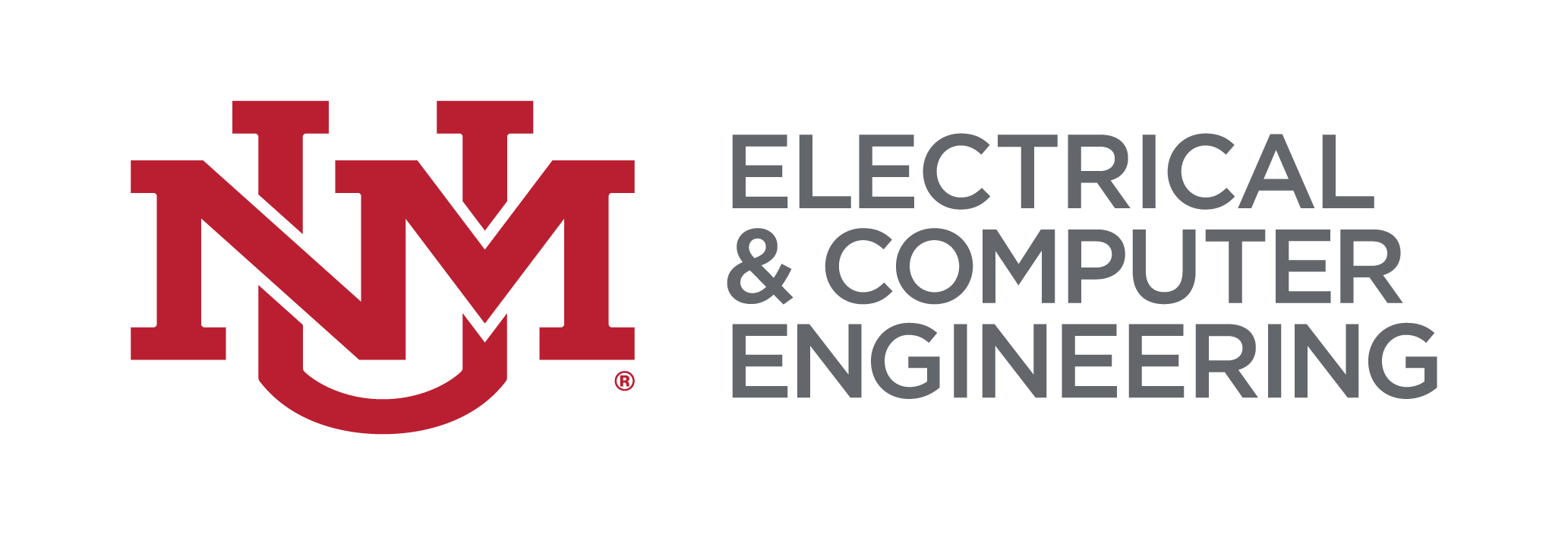Seminars
Fall 2025 ECE 590 Graduate Seminars

December 5, 2025
Boom! Squish! Dynamic Compression via Pulsed Power: A Primer On The How and The Why Of Experimental Shock Physics and Matter at Extremes
Sal Portillo, UNM
3:00 pm, UNM Centennial Engineering Center, Room 1026
Online Guests: Contact Prof. Santhanam <bsanthan@unm.edu> for a Zoom link
Abstract: Dynamic compression of materials yields thermodynamic properties and response to different loading conditions. These conditions mimics those found in astrophysics, ballistic shocks and certain fusion applications. By measuring the particle and wave velocities we can get an understanding of the pressure and temperature as a function of volume and density. Which in turn can be used to develop a predictive equation that explains the behavior of the material.
This talk is a primer on how to use pulsed power to generate magnetic pressures that can launch a dynamic compression wave into a material, directly or via physical impact to generate different loading conditions. So, we will describe our pulsed power accelerator, the experimental set up of how the magnetic forces are generated and we will then give a description on the laser diagnostics we use to measure the particle velocities in the sample. And finally, we will talk about one application that our laboratory is very much interested in, that is a set of materials, related to inertial confinement fusion and isentropic compression.
Bio: Dr. Salvador Portillo Received his Ph.D. in Physics from Texas Christian University in 2003 focused on atomic physics and accelerator science. At UNM, as a research professor, he has established a laboratory designing and building pulsed power accelerators, experimental high energy density physics, time resolved plasma and x-ray diagnostics, shock physics as well as the development of long pulse, frequency agile electromagnetic (HPM) sources for electronic effects. Dr. Portillo also has a nascent programs on the physics of inertial confinement fusion and on laboratory astrophysics.
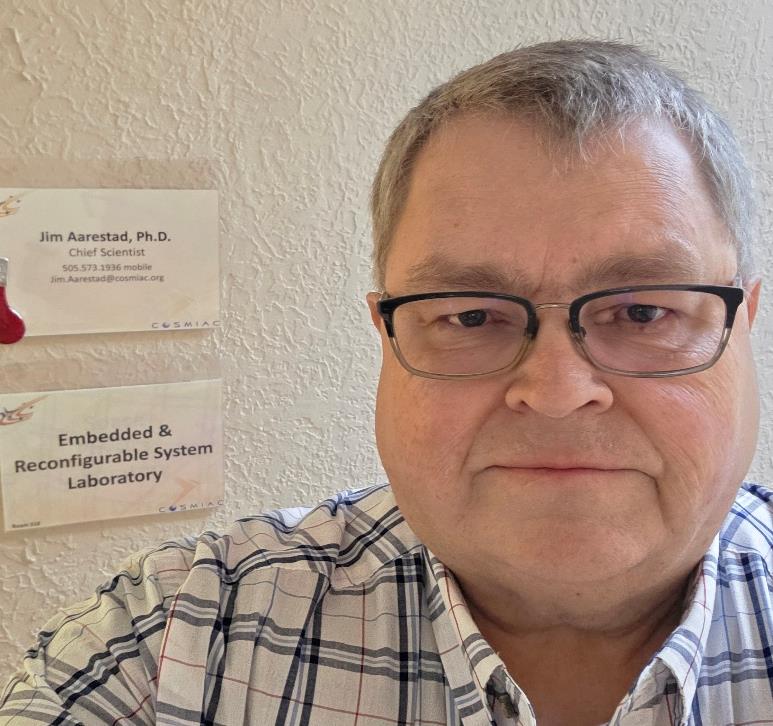
November 21, 2025
Reconfigurable Electronic Systems
Jim Aarestad, UNM COSMIAC Research Center
3:00 pm, UNM Centennial Engineering Center, Room 1026
Online Guests: Contact Prof. Santhanam <bsanthan@unm.edu> for a Zoom link
Abstract: Reconfigurable electronic systems encompass a growing suite of technologies and devices that serve a broad spectrum of industrial, commercial, government, and (increasingly) Internet-of-Things applications. From the smallest IoT mote to the largest broadband router, electronic designs are incorporating reconfigurable logic devices and taking advantage of the performance and design flexibility that these circuits offer. In this introductory talk, we will explore the state of the industry, technologies, and applications of this exciting field. On our journey, we’ll begin with a survey of embedded systems, focusing on reconfigurable logic devices such as FPGAs, SoCs, and more advanced devices.
Bio: Jim Aarestad(Ph.D in Engineering, UNM – 2013) is a Research Professor for the UNM School of Engineering. His current position as the Chief Scientist for COSMIAC is currently funded by the Air Force Research Laboratory (AFRL/RVB) to provide engineering services in the areas of satellite navigation research and laser communication systems design for inter-satellite data links. He has been a member of the COSMIAC staff since 2013, where he has delivered solutions for numerous satellite and space-related hardware and software systems, including a broad range of platforms and technologies. Dr. Aarestad also has taught several graduate and undergraduate courses in the ECE Department as requested.

November 14, 2025
Artificial Intelligence: A short introduction
Manel Martínez-Ramón, UNM
3:00 pm, UNM Centennial Engineering Center, Room 1026
Online Guests: Contact Prof. Santhanam <bsanthan@unm.edu> for a Zoom link
Abstract: Artificial intelligence is now pervasive in our daily lives, reshaping how we communicate, learn, and work.
Today’s AI advances are largely driven by deep learning, especially transformer architectures, the foundation of large language models. These, in turn, trace their origins to an early and rather simple abstraction of the biological neuron, the fundamental unit of the nervous system.
In this introductory talk, we will explore the evolution of artificial intelligence from its beginnings in the 1950s to the present. Along the way, we will see how AI has often been guided by the aspiration to emulate the human brain, an ambition that remains, for now, more of an inspiring vision than a reality.
Bio: Dr. Manel Martínez-Ramón (Ph.D. in Telecommunications Technologies from Universidad Carlos III de Madrid, Spain, 1999) is a Professor in the ECE Department at UNM. He holds the King Felipe VI Endowed Chair, sponsored by the household of the King of Spain. He joined the UNM ECE Department in 2013 as a full professor. His research activities include applications of machine learning to smart antennas, smart grid, photovoltaics, particle accelerators, and others. He is a co-author of the books Digital Signal Processing with Kernels (IEEE Press/Wiley, 2018), Machine Learning Applications in Electromagnetics and Antenna Array Processing (Artech House, 2021) and Deep Learning, a Practical Introduction (Wiley, 2024).
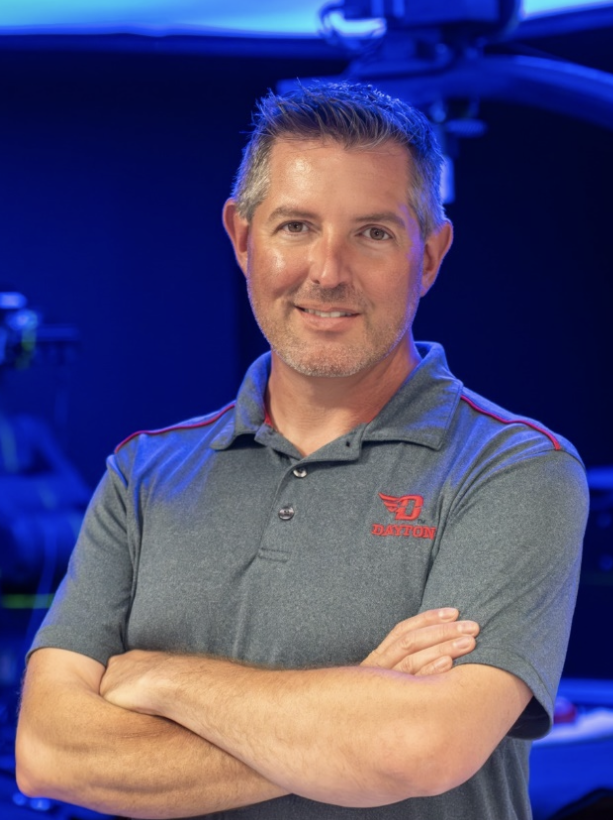
November 7, 2025
Laboratory-based Scene Generation for Polarimetric Phenomenology Studies
Bradley Ratliff, University of Dayton
3:00 pm, UNM Centennial Engineering Center, Room 1026
Online Guests: Contact Prof. Santhanam <bsanthan@unm.edu> for a Zoom link
Abstract: The Automated Remote Sensing Solar Simulation (ARSSS) facility within the Applied Sensing Lab at the University of Dayton in a unique facility constructed to support parameterized polarimetric scene generation. The ARSSS lab contains highly accurate and repeatable devices for positioning imaging polarimeters, well-characterized light sources, and scenes/objects, enabling collection of unique polarimetric data to support a wide range of phenomenology studies. We describe the facility and its capabilities, datasets we have released publicly, and how these data are enabling our research in the development of novel geometry-optimized polarimetric display strategies.
Bio: Dr. Ratliff is an associate professor of Electrical and Computer Engineering at the University of Dayton in Dayton, Ohio and also the director of the Applied Sensing Laboratory that be founded in 2020. Prof. Ratliff received his B.S. and M.S. degrees in computer and electrical engineering from the University of Dayton in 2000 and 2001, respectively. He received the Ph.D. degree in electrical engineering from the University of New Mexico in 2004 and was the recipient of the 2006 UNM Popejoy Dissertation Prize. His research interests are in the areas of image processing and pattern recognition for remote sensing applications, particularly in the areas of polarimetric, hyperspectral, infrared, and 3D imaging.
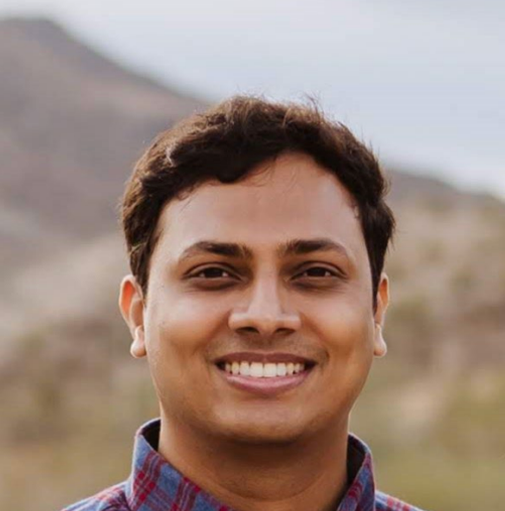
October 31, 2025
High-Fidelity RF Systems Under Resource Constraints
Adarsh Venkataramani, UNM
3:00 pm, UNM Centennial Engineering Center, Room 1026
Online Guests: Contact Prof. Santhanam <bsanthan@unm.edu> for a Zoom link
Abstract: This seminar presents advances in adaptive, highfidelity RF architectures for communication and sensing systems operating under stringent hardware and power constraints. The first part focuses on lowlatency optimization algorithms for in-band fullduplex and distributed coherent communication frameworks, designed to improve spectral efficiency, synchronization, and power management in emerging wireless standards such as 5G/6G. These techniques integrate software-defined radio digital twining, amplifier linearization, and self-interference cancellation to achieve real-time, resource-efficient RF operation across low-C-SWaP platforms.
The second part explores advances in millimeterwave radar-based biomedical sensing, highlighting 3- D MIMO imaging and frequency-modulated continuous-wave radar for contactless vital-sign and heart-sound monitoring. Leveraging motionenhanced beamforming and spatially resolved vitalsign intensity mapping, these systems enable precise localization and multiperson tracking. Implemented using commercial off-the-shelf components, they emphasize efficient signal processing, error tolerance, and real-time adaptability to overcome hardware limitations.
Bio: Dr. Adarsh A. Venkataramani is a Postdoctoral Research Fellow in the Antennas & RF Laboratory at the University of New Mexico, in collaboration with COSMIAC. He received his M.S, and Ph.D. in Electrical Engineering from Arizona State University in 2018 and 2024. His research spans software-defined radios, beamforming, inband full-duplex communications, and mmWave/MIMO radar systems. He has contributed to the development of low-cost SDR testbeds for accurate device characterization, cooperative beamforming algorithms, radarbased biomedical monitoring, and multi-function RF architectures. His recent work focuses on RF sensing and communications through plasma channels to enable resilient interplanetary wireless links.

October 24, 2025
MATLAB with Python: Accelerating your Workflows
Jon Loftin, MathWorks
3:00 pm, UNM Centennial Engineering Center, Room 1026
Online Guests: Contact Prof. Santhanam <bsanthan@unm.edu> for a Zoom link
Abstract: MATLAB provides a flexible, two-way integration with many programming languages, including Python. This allows different teams to work together and use MATLAB algorithms within production software and IT systems. If you have functions and objects in Python, you can call them directly from MATLAB. This allows you to work entirely within MATLAB without switching your programming environment. In this workshop we will discuss the different ways you can incorporate Python into MATLAB. We will look at several examples and incorporate the SunPy Python package for solar data analysis. This will be a fun and interactive workshop, so don’t forget to bring your laptop!
Bio: Jon Loftin is a Senior Customer Success Engineer at MathWorks. Jon’s background is in mathematics. More specifically, implementing mathematics in a computer. He holds degrees in mathematics: a BS from Southern Arkansas University, a MS from the University of Arkansas, and a Ph.D. from Texas Tech University. He has had years of teaching experience, from teaching at the Naval Nuclear Power School to teaching as an Assistant Professor. Jon’s research focus is building efficient integration techniques in finite element methods.
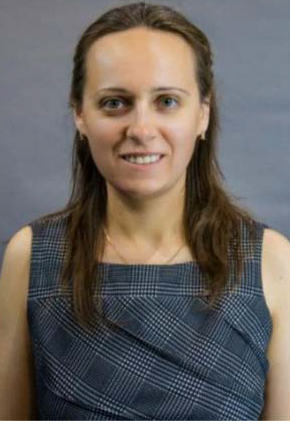
October 3, 2025
Designing Multipolar-Resonant Nanoantennas for Adaptive Nanophotonics
Viktoriia Babicheva, UNM
3:00 pm, UNM Centennial Engineering Center, Room 1026
Online Guests: Contact Prof. Santhanam <bsanthan@unm.edu> for a Zoom link
Abstract: We delve into the engineering of multipole resonances within subwavelength nanoantennas, targeting nanophotonic applications across the visible and near-infrared spectral regions. Through tailoring of nanoantenna dimensions, shapes, and compositions, intricate resonant phenomena are induced, facilitating the confinement and manipulation of electromagnetic fields at subwavelength scales. The careful selection of dielectric materials, characterized by minimal optical losses, is harnessed in the design of nanoantennas with high-refractive-index dielectrics. These nanostructures support both electric and magnetic multipole resonances. Crucially, the inherent tunability of these resonances enables us to exert fine-grained control over scattering properties, yielding directed scattering responses. By introducing notable refractive index differences, we design nanostructures with the excitation of multipole resonances, thus engineering their controlled interplay. This manifests as a distinctive unidirectional scattering pattern, showing its a lications in diverse domains, including sensing, ima ing, and communication. Our results highlight the ansformative potential of manipulating multipo'e resonances, emphasizing the important paradigm bift in optical technologies.
Bio: Viktoriia Babicheva is an Asst. Prof. at the Department of E lectrical and Computer Engineering. Dr. Babicheva joined UNM after her postdoctor al work in the College of Optical Sciences at the University of Arizona, Tucson. Prior to that, Dr. Babicheva worked in the Birck Nanotechnology Center at Purdue University and the Center for NanoOptics at Georgia State University. Dr. Babicheva works in the field of nanophotonics, nano-optics, and photonic materials. Babicheva is the lead author or co-author of 80+ peer-reviewed journal articles, 60+ refereed conference publications, two book chapters, and one monograph. She was a Principal Editor in 2015-2020 and an Associate Editor in 2021-2025 for MRS Advances. She currently serves as an Associate Editor for Nano Select (Wiley) and SPIE Journal of Optical Microsystems. She is a Senior Member of IEEE, SPIE, and Optica. She teaches courses on engineering and computational electromagnetics to students in regular programs in EE and Optical Science and Engineering, as well as the Accelerated Online Program in Space Systems Engineering.

September 26, 2025
A New, Integrated Vision of Non Terrestrial Networks Targeting the Global 6G Connectivity
Dr. Armin Doerry, Ph.D., Sandia National Laboratories
3:00 pm, UNM Centennial Engineering Center, Room 1026
Online Guests: Contact Prof. Santhanam <bsanthan@unm.edu> for a Zoom link
Abstract: Airborne radar for intelligence, surveillance, and reconnaissance has become an indispensable tool for civilian and military applications, found in both manned and unmanned platforms. Radar offers the usual advantages of providing its own illumination and ability to penetrate optical obscurants like weather, smoke, dust, etc. In addition, with coherent processing, signal phase information can be exploited for some unique sensing modes.
Operational radar systems are usually multi mode to engage missions for all manner of phenomenology detection and characterization, and have a long history of success for their intended purposes. Nevertheless, the advance of technology is facilitating enhanced exploitation of generally existing capabilities, as well as enhanced utility with new capabilities.
We will discuss current state of the art performance, and discuss several promising areas of future capability enhancements.
Bio: Dr Armin Doerry is a Distinguished Member of Technical Staff in the ISR Mission Engineering Department of Sandia National Laboratories, and has been a Research Professor at the University of New Mexico Center for High Technology Materials. He holds a Ph D in Electrical Engineering from The University of New Mexico. He has worked in numerous aspects of airborne radar systems’ analysis, design, and fabrication since 1987 and continues to do so today. He has taught Radar Signal Processing classes (and related topics) as an adjunct professor at The University of New Mexico, and has taught numerous seminars on various radar topics to government, military, industry, and academic groups He is a Fellow of the SPIE, and a Fellow of the MSS.
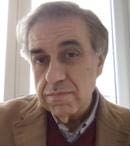
September 12, 2025
A New, Integrated Vision of Non Terrestrial Networks Targeting the Global 6G Connectivity
Prof. Claudio Sacchi, University of Trento, Dept. of Information Engineering and Computer Science, Trento, Italy
3:00 pm, UNM Centennial Engineering Center, Room 1026
Online Guests: Contact Prof. Santhanam <bsanthan@unm.edu> for a Zoom link
Abstract: After the COVID 19 pandemic, the European Union decided to launch a financing program called “Next Generation EU”, aimed at promoting the restart after the shock One of the key points was to design the future evolutions of the global network in such a way as to connect people, institutions, companies, schools, etc and replace the virtual presence with the physical one, thus being ready for any kind of new emergency Particularly, in the framework of this financing program the Restart Extended Partnership has been proposed, funded and launched which is related to ICT technologies the RESTART name that has been chosen stands for ::“Research and innovation on future Telecommunications systems and networks, to make Italy more smart” RESTART is articulated into structural projects One of these structural projects is ITA NTN, acronym which stands for “Integrated Terrestrial and Non Terrestrial Networks” The main accent of the project is on the tight cooperation of terrestrial and non terrestrial networks to be deployed in 6 G communication scenarios characterized by global and ubiquitous coverage The seminar will try to highlight at a glance the main innovative achievements of ITA NTN in the first two project years and to show some possible contributions to the standardization of future 6 G NTNs Particular attention will be given on the results that have been achieved in the framework of the project such as the definition of use cases and requirements for the upcoming 6 G standard together and the link budget analysis for the considered transmission techniques.
Bio: Claudio Sacchi received the “ degree in Electronic Engineering and the Ph D in Space Science and Engineering from the University of Genoa, Italy, in 1992 and 2003 respectively In August 2002 he joined the Department of Information Engineering and Computer Science ( University of Trento, Italy, as an Assistant Professor He was promoted to Associate Professor in December 2020 He has authored and coauthored more than 1 5 0 papers published in international journals and conferences He is Senior Member IEEE and a member of the IEEE ComSoc IEEE BTS, IEEE VT, and IEEE AESS Since 2019 he has been coordinating and chairing the IEEE AESS technical panel ::“Glue Technologies for Space Systems” that was awarded by AESS as “Outstanding Panel of the Year” in 2020 and 2021 Since January 1 st, 2023 Claudio Sacchi has got double affiliation with UNM as Research Professor His main research interests are related to emerging satellite and aerospace communications and broadband mobile communications in 5 G and 6 G systems, software defined radios, emergency communications, mm wave transmission in terrestrial and satellite applications.

September 5, 2025
Video Analysis: A Comprehensive Review of a Frontier of Artificial Intelligence
Marios S. Pattichis, Department of Electrical & Computer Engineering, UNM
3:00 pm, UNM Centennial Engineering Center, Room 1026
Online Guests: Contact Prof. Santhanam <bsanthan@unm.edu> for a Zoom link
Abstract: My goal in this talk is to review current AI and Machine Learning methods developed for analyzing videos. My primary focus will be on Medical Video Analysis systems. However, I will also cover some general methods that have been developed for general problems in video analysis.
Bio: Prof. Marios Pattichis received a B.Sc. degree (High Hons. and Special Hons.) in computer sciences, a B.A. degree (High Hons.) in mathematics, an M.S. degree in electrical engineering, and a Ph.D. degree in computer engineering from The University of Texas at Austin, Austin, TX, USA, in 1991, 1991, 1993, and 1998, respectively. He is currently a Professor and Director of online programs in the Department of Electrical and Computer Engineering at the University of New Mexico. At UNM, he is also the Director of the Image and Video Processing and Communications Lab (ivPCL).

August 29, 2025
Flight, Force, and Form: Rethinking Aerial Robotics through Physical Coupling
David Saldana, Ph.D., Assistant Professor, Department of Computer Science & Engineering, Lehigh University
3:00 pm, UNM Centennial Engineering Center, Room 1026
Online Guests: Contact Prof. Santhanam <bsanthan@unm.edu> for a Zoom link
Abstract: This talk introduces cooperative aerial robots that exploit physical coupling —via rigid links, cables, and deformables— to enable new capabilities in flight (mobility), force (interaction), and form (morphing). I highlight our recent research advances on cooperative transportation, object manipulation, and shape adaptation, driven by dynamics, control, and learning.
Bio: David Saldaña is an Assistant Professor in Computer Science and Engineering and director of the Swarms Lab at Lehigh University. His research focuses on multi-robot systems, swarm robotics, and aerial manipulation, with applications in environmental monitoring, disaster response, and construction. Saldaña’s work aims to develop resilient, adaptive robotic systems capable of operating in dynamic and unpredictable environments. He worked as a Post-Doctoral Researcher at the GRASP Laboratory at the University of Pennsylvania. He earned his PhD in Computer Science, artificial intelligence and robotics, from the Federal University of Minas Gerais in Brazil in 2017, and holds both M.Sc. and B.Sc. degrees in systems engineering from the Universidad Nacional de Colombia. His research has been recognized with support from the National Science Foundation and the Office of Naval Research, including the NSF CAREER award.

August 22, 2025
Emerging Materials and Devices for Energy-Efficient Nanoelectronics
Dr. Fabia Farlin Athena, Ph.D., Post-doctoral Fellow, Stanford University
3:00 pm, UNM Centennial Engineering Center, Room 1026
Online Guests: Contact Prof. Santhanam <bsanthan@unm.edu> for a Zoom link
Abstract: The rapid rise of data-intensive workloads, driven by artificial intelligence, is exposing the fundamental energy and latency limits of conventional computing hardware. The memory wall bottleneck, in particular, demands a shift toward new hardware architectures designed to minimize costly data movement. In this seminar, I will present advances at the intersection of materials science and device engineering that address this challenge. First, I will discuss adaptive oxide-based resistive memories for inmemory computing, detailing how novel MAXphase electrodes achieve record-low off-state currents and how an in-situ recovery method enables robust transfer learning on analog AI accelerators. Next, I will introduce complementary back-end-of-line technologies that advance scalability for high-density, on-chip memory, including oxide semiconductor gaincells and an interface-dipole engineering strategy for precise threshold voltage tuning. Together, these results highlight a practical and scalable path toward vertically integrated, energy-efficient electronics for future datacentric applications.
Bio: Fabia Farlin Athena is an Energy Fellow in Electrical Engineering at Stanford University, working with Prof. H.-S. Philip Wong and Prof. Alberto Salleo to develop high-bandwidth oxide-semiconductor gain-cell memories and monolithic 3-D memory/logic stacks for ultra-lowpower AI systems. She earned her Ph.D. and M.S. in Electrical & Computer Engineering from Georgia Institute of Technology, advised by Prof. Eric M. Vogel, where her research focused on adaptive oxide memristors for brain-inspired AI, receiving the Sigma Xi Best Ph.D. Thesis Award. She has also held research scientist intern positions at IBM TJ Watson. Fabia’s interdisciplinary contributions have been recognized with the IBM PhD Fellowship, MRS Graduate Student Award, Cadence Technology Scholarship, VLSI Symposium Highlight Paper, EECS Rising Stars, Stanford Energy Postdoctoral Fellowship, and Forbes 30 Under 30 North America.
Spring 2025 ECE 590 Graduate Seminars
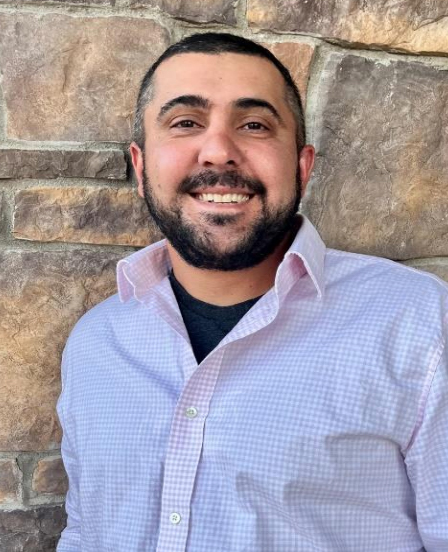
May 9, 2025
Intel Technology Roadmap and Challenges
Jamshid Sorooshian, Intel Corporation, Rio Rancho, NM
3:00 pm, UNM Centennial Engineering Center, Room 1026
Online Guests: Contact Prof. Osiński <osinski@chtm.unm.edu> for a Zoom link
Abstract: The 3D Inter-Connect (IC) technology roadmap is strong and vital to meet new market demands.
The challenges with integrated supply chains, evolving customer demand, and new engineeringbased problems have driven a need for more focus on building robustness in the 3D IC lines for both suppliers and customers alike.
The demand for greater computing requires larger packaged components. This will drive increased probability of failure, as well as concerns around power consumption and cooling requirements.
This talk will provide a high level overview on the fundamentals of 3D packaging and its challenges in the world of AI product lines.
Bio: Dr. Jamshid Sorooshian is the New Mexico Site Manager for Program and Technology focused on specialty processes specific to the New Mexico site and the broader disaggregate manufacturing organization. He received his PhD from the University of Arizona from the Department of Chemical Engineering with a focus on semiconductor planarization processes. He has spent his professional career at Intel Corporation spanning roles in Process Engineering, Yield and Integration, Technology and Development, and Technology Transfer management. Dr. Sorooshian currently manages all aspects of cost, technology risk assessment, and technology transfer for the New Mexico site.
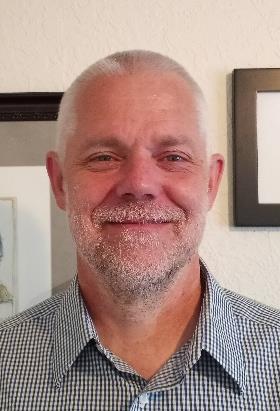
May 2, 2025
Analog Frontiers: Neuromorphic Devices and Quantum Photonic Processors
Boris Kiefer, New Mexico State University
3:00 pm, UNM Centennial Engineering Center, Room 1026
Online Guests: Contact Prof. Osiński <osinski@chtm.unm.edu> for a Zoom link
Abstract: For decades, the strict separation of processor and memory in von Neumann computing architectures has been recognized as a major obstacle for reducing computing energy consumption. At the same time, we face the physical limits of transistor miniaturization and its rising leakage and interconnect overheads. In response, two complementary paradigms— bio-inspired neuromorphic computing and roomtemperature quantum photonics—offer radically new pathways to ultra-efficient information processing. Neuromorphic hardware leverages analog, statedependent devices (e.g. phase-change materials or magneto-structural elements) to co-locate memory and computation, achieving the brain-inspired synapse-like plasticity with atto- to femtojoule-scale updates at room temperature. Quantum photonic architectures, meanwhile, encode and process information in photons and optical cluster states, exploiting bosonic interference and measurement-based gates to perform computation with minimal static power and no cryogenic overhead. I will discuss how these platforms point to a new era of inmemory, low-overhead operations: neuromorphic devices emulate neural dynamics at the device level, while photonic circuits realize fault-tolerant quantum logic in integrated waveguides, both promising orders-ofmagnitude energy savings over conventional digital and cryogenic approaches.
Bio: Dr. Boris Kiefer received a diploma in Physics from the University of Göttingen in 1994, where he performed computational research on metallic glasses and their properties. After moving to the U.S. in 1996, he completed his Ph.D. in 2002 in the Department of Geological Sciences at the University of Michigan. The following year he spent as a postdoc in the Geosciences Department at Princeton University, before joining the Physics faculty at New Mexico State University. He was tenured in 2009 and promoted to full professor in 2016. Initially concentrating on the computational exploration of Earth and planetary materials, he has since turned his attention to discovering materials for technological applications and to harnessing photonics for energy-efficient computing architectures.
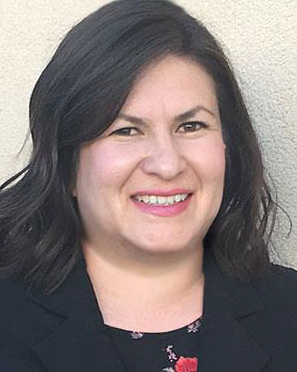
April 25, 2025
Semiconductor Membranes for Millimeter-Wave Shielding and Infrared Detection
Emma J. Renteria, Center for High Technology Materials, UNM
3:00 pm, UNM Centennial Engineering Center, Room 1026
Online Guests: Contact Prof. Osiński <osinski@chtm.unm.edu> for a Zoom link
Abstract: The increasing use of radio-frequency (RF) devices saturates the environment with electromagnetic radiation capable of disrupting the operation of electronic components, including sources and detectors of IR radiation that are widely used in commercial and military applications. Therefore, IR devices must be enclosed by a material that blocks RF waves while allowing the transmission of IR radiation. Here, we show that single-crystalline semiconductor membranes are viable candidates for shielding IR devices from electromagnetic interference as they provide high shielding effectiveness and optical transmittance. In addition, we demonstrate that thin junction photodiodes can be integrated on the back surface of the semiconductor membrane, making the latter a multifunctional material. In our work, an epitaxially grown and heavily doped GaAs semiconductor membrane serves as an optically transparent shield of RF waves and the n-region of the heterojunction photodiode. We will show the details in the integration and fabrication of the devices and extensive characterization of their performance.
Bio: Emma J. Renteria is a Research scientist at UNM’s Center for High Technology Materials (CHTM). Before starting her position as a research scientist, she did a two-year Intelligence Community (IC) postdoctoral research fellowship at CHTM working on multifunctional 2D materials that integrate electromagnetic interference shielding and infrared detection functionalities. Previous to her IC postdoctoral fellowship, she was a postdoctoral fellow at CHTM working on the development of high-power diode lasers, single-photon emitters and detectors, smart materials for antenna devices, and passivation techniques for AlSb gamma detectors. Dr. Renteria received her Ph.D. in Electrical Engineering from UNM in 2017, focusing on ultra-thin film III-V photovoltaic and thermophotovoltaic technologies. Her current research interests are in the synthesis, processing, and characterization of inorganic nanosheets for radio-frequency applications.

April 18, 2025
Distributed Satellite Autonomy - Challenges, Approaches, and Recent Results
Sean A. Phillips, Air Force Research Laboratory
3:00 pm, UNM Centennial Engineering Center, Room 1026
Online Guests: Contact Prof. Osiński <osinski@chtm.unm.edu> for a Zoom link
Abstract: Currently, satellite operations are quite a manual process, requiring a multi-shift crews to maintain operations of critical missions like GPS. However, with the push to distribute and proliferate satellite missions and the increasing congestion of the space domain, satellite operations in its current state are not scalable due to the centralized operating paradigm. Recently there has been a push to automate many of the functions of the satellite and move the operations from a human-in-the-loop to a human-on-the-loop paradigm where the operators will serve as a monitoring function. In general, satellite autonomy is a large multi-discipline research area spanning the areas of systems and control, machine learning, satellite design, human-machine teaming, data fusion, and software design and development. This presentation will discuss challenges, approaches and methods under development at AFRL to enable distributed autonomous satellite operations.
Bio: Dr. Sean A. Phillips received his B.S. and M.S. in Mechanical Engineering from the University of Arizona specializing in Dynamics and Controls in 2011 and 2014, respectively, followed by Ph.D in Computer Engineering from the University of California, Santa Cruz in 2018.. He now is a Senior Mechanical Engineer and Technology Advisor of the Space Control Branch at the Air Force Research Laboratory. He leads the Local Intelligent Network of Collaborative Systems Laboratory and a portfolio on distributed and clustered satellite autonomy, spanning fundamental to applied R&D. He also holds the title of Research Assistant Professor (LAT) at UNM. In 2023, Dr. Phillips received the AFRL Early Career Award. His research interests include autonomous satellite operations, systems and control design, robustness analysis, hybrid systems, verification and validation tools, UAV and robotics, and safe reinforcement learning
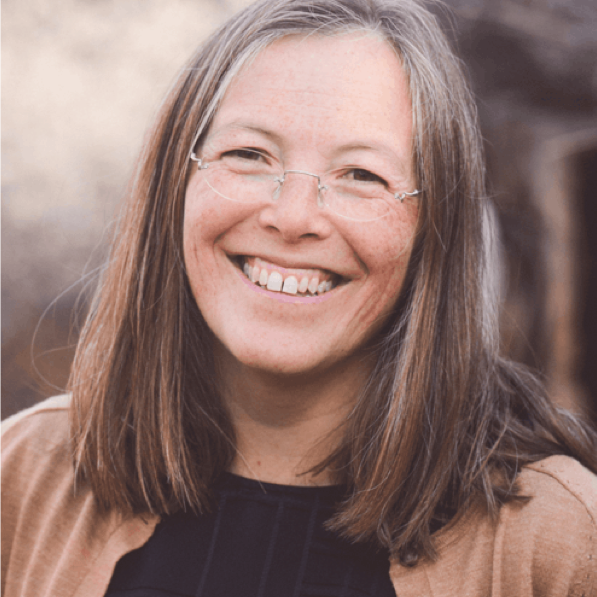
April 11, 2025
Towards Probabilistic Modeling and Control of Human Heterogeneity
Meeko Oishi, Department of Electrical and Computer Engineering, UNM
3:00 pm, UNM Centennial Engineering Center, Room 1026
Online Guests: Contact Prof. Osiński <osinski@chtm.unm.edu> for a Zoom link
Abstract: Despite the ubiquity of human interaction with autonomous systems, few tools exist for modeling, computation, and control that are responsive to human heterogeneity. We seek to ascertain when human heterogeneity is important for control, and to design and assure controllers that are responsive to the uncertainty inherent to human-inthe-loop systems. Our methods are based in both data-driven and modelbased approaches that can accommodate arbitrary, non-Gaussian uncertainty. We developed high-fidelity, data-driven characterizations of human-in-the-loop trajectories, based in conditional distribution embeddings, with application to psychomotor tasks. We have also begun to explore a game theoretic framework for controller synthesis under partial cooperation between players. Lastly, we have developed stochastic processes associated with human decision and action in a computationally efficient manner, without gridding, sampling, or recursion. These methods and tools help address the need for new paradigms and frameworks to enable responsivity to human variability in autonomous systems.
Bio: Meeko Oishi received the B.S.E. in Mechanical Engineering from Princeton University in 1998, followed by the M.S. (2000) and Ph.D. (2004) in Mechanical Engineering from Stanford University (Ph.D. minor, Electrical Engineering). Before joining UNM, she held postdoctoral positions at Sandia National Laboratories and at the National Ecological Observatory Network, and a faculty position at the University of British Columbia at Vancouver. She is a Professor of Electrical and Computer Engineering at UNM. Her research interests include human-in-the-loop control, stochastic optimal control, and autonomous systems. She is the recipient of the George Bienkowski Memorial Prize at Princeton University, the Truman Postdoctoral Fellowship in National Security Science and Engineering, the NSF CAREER Award, the UNM Regents’ Lectureship, and the NSF BRITE Fellowship. She was a Visiting Researcher at AFRL Space Vehicles Directorate, and a Science and Technology Policy Fellow at The National Academies.
April 4, 2025
Controlling Systems to Probability Distributions using Generative Modeling
Dr. Karthik Elamvazhuthi, Los Alamos National Laboratory
3:00 pm, UNM Centennial Engineering Center, Room 1026
Online Guests: Contact Prof. Osiński <osinski@chtm.unm.edu> for a Zoom link
Abstract: Steering systems described by parametrized ordinary differential equations to a target set is a fundamental problem in control theory. We address this problem by posing it as a task of sampling from a probability distribution concentrated on the target set with constraints on sample trajectories. Denoising Diffusion Probabilistic Models and Flow Matching are recently introduced methods in machine learning for sampling-based image and text generation that use time reversals of the Fokker-Planck equation or the Continuity equation. We develop these methods to control problems, investigating the existence of such time reversals in such a constrained setting, and then testing the method numerically to examples such as path planning for a robot in a non-convex space and stabilizing systems of moderately high dimension.
Bio: Dr. Karthik Elamvazhuthi (Ph.D. in Mechanical Engineering from Arizona State University) is a postdoctoral scholar in the Applied Mathematics and Plasma Physics Division, Los Alamos National Laboratory. His research activities lie at the intersection of control theory, optimal transport, generative modeling, and dynamical-system-based methods for neural networks.

March 28, 2025
Engineering the Electron-Photon Interactions for Medical, AI, Quantum, and Space Applications
Hooman Mohseni, Northwestern University
3:00 pm, UNM Centennial Engineering Center, Room 1026
Online Guests: Contact Prof. Osiński <osinski@chtm.unm.edu> for a Zoom link
Abstract: Recent advances in science and engineering unlock unprecedented control over electron-photon interactions, enabling new materials and devices with significant future impact. I will show how our new devices enable compact medical imaging systems, extremely energy-efficient AI systems, quantum computers that could operate near room temperature, and engineered nanoparticles that could warm up the atmosphere of Mars about 5000x more efficiently than the best previous solution to make it habitable within several decades.
Bio: Dr. Hooman Mohseni is the AT&T Chair Professor of Electrical and Computer Engineering and Professor of Physics and Astronomy at Northwestern University. He is the recipient of research and teaching awards, including W. M. Keck Foundation Award, NSF CAREER Award, DARPA Young Faculty Award, and Northwestern Faculty Honor Roll. Mohseni has served on many international conference committees, scientific review panels, and editorial boards. He has published over 275 articles in major journals (Nature, Science, Nature Photonics, etc.). He holds 87 US and International patents, and has been involved in several startups as founder and CTO. He is a Fellow of National Academy of Inventors (NAI), SPIE, and OSA.
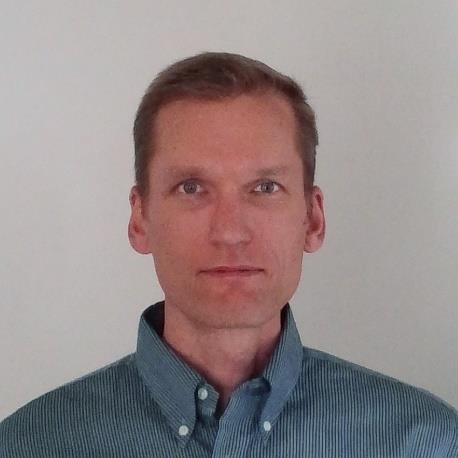
March 7, 2025
Photonic-Crystal Surface-Emitting Lasers (PCSELs) Based on Epitaxial Quantum Nanostructures
Thomas J. Rotter, Center for High Technology Materials, UNM
3:00 pm, UNM Centennial Engineering Center, Room 1026
Online Guests: Contact Prof. Osiński <osinski@chtm.unm.edu> for a Zoom link
Abstract: Since the invention of semiconductor lasers in 1962, these devices have revolutionized a wide range of industries, from telecommunications and information technology to medical applications, by providing compact, efficient, and tunable light sources. This talk will provide an overview of recent research conducted at the Center for High Technology Materials (CHTM) related to semiconductor lasers grown via molecular beam epitaxy (MBE). It will focus on investigations into various laser active regions designed for different wavelengths, including arsenide and antimonide quantum wells, as well as InAs quantum dots and dashes, exploring both their epitaxial growth techniques and their applications in laser devices. Additionally, the design and fabrication of various laser architectures, particularly surface emitting lasers such as vertical-external-cavity surface-emitting lasers (VECSELs) and photonic crystal surfaceemitting lasers (PCSELs), will be discussed. Each of these architectures in combination with specific active regions presents unique challenges and opportunities in terms of performance, efficiency, and integration with other technologies.
Bio: Dr. Thomas J. Rotter is a Research Associate Professor at the Center for High Technology Materials at the University of New Mexico. He received his PhD degree in Optical Science & Engineering from UNM in 2007 and the equivalent of a Masters Degree in Physics from the Westfaelische Wilhelms Universitaet Muenster, Germany. He has also been working at the California NanoSystems Institute at the University of California at Los Angeles, at the Air Force Research Laboratory at the Kirtland AFB, and at Actoprobe LLC. He has authored or co-authored over 90 technical papers in peer reviewed journals. He currently works on projects involving the epitaxial growth of optical and electronic devices, including lasers, VECSELs, PCSELs, photodetectors, solar cells, SESAMs, and high mobility transistors. The devices are based on group III arsenides, antimonides, and phosphides, and include highly mismatched materials, self-assembled nanostructures, as well as low dimensional materials.

February 28, 2025
Fundamentals of Space Cybersecurity
Micco Estrada, COSMIAC
3:00 pm, UNM Centennial Engineering Center, Room 1026
Online Guests: Contact Prof. Osiński <osinski@chtm.unm.edu> for a Zoom link
Abstract: As space-based technologies become increasingly vital for communication, navigation, defense, and scientific research, ensuring the security of space systems is becoming more critical than ever. With the push to begin expanding space capabilities with bigger networks in orbit, the danger to these systems becomes much greater as the space environment becomes more contested. This seminar introduces the fundamentals of space cybersecurity. We will be covering the basics of how space systems operate, potential threats, vulnerabilities, defense mechanisms, and the current state of the field. In addition to covering the fundamentals of this subject, we will also go over some of the current research activities currently being done by the COSMIAC Space Cybersecurity Lab.
Bio: Micco Estrada is a Research Engineer at the COSMIAC Research Center and lead engineer of the center's Space Cybersecurity lab. Micco joined COSMIAC in 2021 as a student and then after receiving his bachelor’s in computer science from UNM became full time staff in 2023. He got his start doing work directly supporting AFRL’s Space Cyber Resiliency team. The time spent embedded in this team taught Micco the fundamentals and challenges of Space Cybersecurity. The most notable work he did as part of this team was conducting vulnerability assessments in space technologies of interest to AFRL. In Spring 2024, COSMIAC opened their Space Cybersecurity Lab, in which Micco currently leads with a team of students. The goals of this lab are to conduct applied cybersecurity research to aid the field in further understanding the threat landscape in the space domain. To aid these goals, this lab built the COSMIAC CaveCube which seeks to allow for more robust cybersecurity experimentation with hardware and software that holds flight heritage and is of interest to the space industry.

February 21, 2025
Human-Machine Interfaces with Sensors and Robotics for Infrastructure Safety
Fernando Moreu, UNM
3:00 pm, UNM Centennial Engineering Center, Room 1026
Online Guests: Contact Prof. Osiński <osinski@chtm.unm.edu> for a Zoom link
Abstract: This seminar summarizes humancomputer interfaces for quality inspection to enhance human decision-making. Interfaces of data, sensors, analysis, image-based automatic defect-detection, and visual inspections are explored focusing on Augmented Reality (AR) systems. Compared to other approaches, AR interfaces enhance precision, reduce setup time, and allow for more intuitive interaction. Humans need to be aware of damage and behavior of structures in real time to provide safety, new structural design, and possibly responses in the context of emergencies. Automatic robot control in human proximity with the AR interface opens a bilateral communication line between humans and robots. New design, monitoring, and damage interfaces will be presented in the context of human-machine collaboration using AI, computer vision, and structural dynamics.
Bio: Dr. Fernando Moreu is an Associate Professor at the Department of Civil, Construction, and Environmental Engineering (CCEE) at UNM. He holds courtesy appointments in the Departments of Electrical & Computer Engineering, Mechanical Engineering, and Computer Science at UNM. He is the founder and director of the Smart Management of Infrastructure Laboratory (SMILab). Prof. Moreu received his MS and PhD degrees in structural engineering from the University of Illinois at Urbana-Champaign (2005 and 2015, respectively). He received the 2022 Outstanding Junior Faculty Researcher award from the UNM School of Engineering. Prof. Moreu’s research interests include structural dynamics and control, structural health monitoring, wireless smart sensor networks, cyber-physical systems, computer vision, augmented reality, unmanned aerial systems, bridge engineering, and aerospace operations. His projects are funded by the DOE, NSF, ONR, NAS, US DOT, TRB, and the commercial sector. He is a registered Professional Engineer since 2010. Prof. Moreu is the current Secretary of the ASCE Engineering Mechanics Institute (EMI) Structural Health Monitoring and Control (SHMC) Committee (2023- 2026) and the current secretary of the Society for Experimental Mechanics Technical Division of Dynamics of Civil Structures (2023-2025)

February 7, 2025
How does ChatGPT work?
Manel Martínez-Ramón, UNM
3:00 pm, UNM Centennial Engineering Center, Room 1026
Online Guests: Contact Prof. Osiński <osinski@chtm.unm.edu> for a Zoom link
Abstract: Artificial intelligence is everywhere now and it is transforming our lives in many ways and, in particular, in our ways to communicate, learn, and work.
Large Language Models as ChatGPT, Gemini, Llama, or DeepSeek, are the most widely used ones and the ones that capitalize all the attention and social impact due to their power to generate content from queries. Their technology is based on attention mechanisms and transformers and they can be thought as monstruous neural networks trained with massive amounts of data to acquire the necessary knowledge to generate that content.
In this seminar we will review the main elements and the mechanisms that make these large language models work.
Bio: Dr. Manel Martínez-Ramón (Ph.D. in Telecommunications Technologies from Universidad Carlos III de Madrid, Spain, 1999) is a Professor in the ECE Department at UNM. He holds the King Felipe VI Endowed Chair, sponsored by the household of the King of Spain. He joined the UNM ECE Department in 2013 as a full professor. His research activities include applications of machine learning to smart antennas, smart grid, photovoltaics, particle accelerators, and others. He is a co-author of the books Digital Signal Processing with Kernels (IEEE Press/Wiley, 2018), Machine Learning Applications in Electromagnetics and Antenna Array Processing (Artech House, 2021) and Deep Learning, a Practical Introduction (Wiley, 2024)
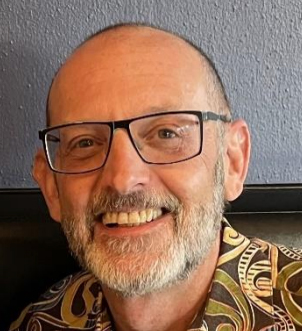
January 24, 2025
Quantum Computing with Neutral Atoms
Ivan Deutsch, Department of Physics and Astronomy, UNM
3:00 pm, UNM Centennial Engineering Center, Room 1026
Online Guests: Contact Prof. Osiński <osinski@chtm.unm.edu> for a Zoom link
Abstract: One of the earliest proposals for scalable quantum computers was to encode qubits in individual, optically trapped, ultracold neutral atoms. Like their more famous cousins, atomic ions, qubits encoded in the energy levels of neutral atoms, are all identical, can have long coherence times, and can be controlled with a variety of magnetooptical fields, with tools that build on decades of development for atomic clocks and precision metrology. Unlike with ions, quantum computing architectures have proceeded more slowly, as neutral atoms are harder to trap and they only weakly interact in their ground state. New developments in trapping and laser technology have now opened the door to high-fidelity operations with potentially hundreds to thousands of qubits - neutral atoms are back in the game! In this talk I will review the state of the art and new approaches to reach universal faulttolerant quantum computing with arrays of trapped neutral atoms.
Bio: Prof. Ivan Deutsch is Regents’ Professor of Physics & Astronomy and the Director of the Center for Quantum Information and Control (CQuIC). He received his B.S. from MIT and his Ph.D. from the University of California Berkeley, and joined the faculty at the University of New Mexico in 1995, where he helped to build the Quantum Information Science (QIS) program. His research is at the interface of theoretical quantum optics, atomic physics, and quantum information theory. Prof. Deutsch has co-authored over 100 peerreviewed publications and has delivered over 120 invited talks. He is the PI of the National Science Foundation’s Focused Research Hub in Theoretical Physics, which established CQuIC as a “QIS theory hub” for the nation. He is also the Founding Director of the Quantum New Mexico Institute (QNM-I) a new Category-III UNM center and planned joint institute with Sandia and Los Alamos National Laboratories.
Fall 2024 ECE 590 Graduate Seminars

December 6, 2024
Levitated Optomechanics at the Air Force Research Laboratory
Maxwell D. Gregoire, Air Force Research Laboratory
3:00 pm, UNM Centennial Engineering Center, Room 1026
Online Guests: Contact Prof. Osiński <osinski@chtm.unm.edu> for a Zoom link
Abstract: Nano- and micro-scale objects levitated in focused laser beams, a.k.a. optical tweezers, have shown great promise as both tools for high-precision sensing as well as exploring the foundations of quantum mechanics and gravity. This talk discusses AFRL’s experiments in using levitated microparticles to achieve high-precision accelerometry for inertial navigation. Two accelerometer concepts will be discussed: an open-loop, off-resonantsensing architecture, and a freefall-based architecture that leverages optical refrigeration to achieve unprecedented accelerometry precision and that could enable quantum superpositions of micron-scale objects with long decoherence times.
Bio: Dr. Maxwell D. Gregoire is a physicist at the Air Force Research Laboratory (AFRL), Space Vehicles Directorate. Hell earned his PhD in physics at the University of Arizona, where he used atom interferometry to make high-accuracy measurements of alkali atom properties. For the last 5 years, he has lead an in-house research group at AFRL and managed acquisition programs developing high-precision inertial sensors using atom interferometry and levitated optomechanics for air and space applications.
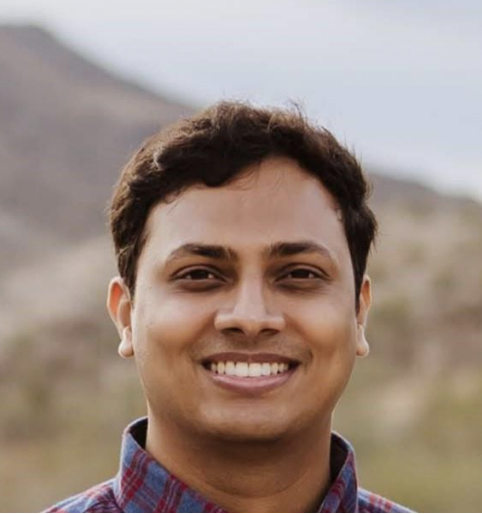
November 22, 2024
Algorithm Development for Coherent Communication Systems
Adarsh Venkataramani, Department of Electrical and Computer Engineering, UNM
3:00 pm, UNM Centennial Engineering Center, Room 1026
Online Guests: Contact Prof. Osiński <osinski@chtm.unm.edu> for a Zoom link
Abstract: This seminar presents low-latency optimization algorithms for in-band full-duplex and distributed coherent communication systems to enhance spectral efficiency, network performance, and power management for emerging technologies (e.g. 5G, 6G, and WiFi 7). Topics include: (1) lowlatency, high-quality measurement of power amplifier distortions using software-defined radios; (2) self-interference cancellation by exploiting amplifier physics for in-band full duplex communication; and (3) on-line beamformer misalignment mitigation in distributed coherent communication with lowC-SWaP devices.
Bio: Dr. Adarsh Venkataramani is a Postdoctoral Fellow with the ECE Dept. at UNM. He received his M.S. and Ph.D. degrees in Electrical Engineering from Arizona State University in 2018 and 2024, respectively. His research focuses on design and implementation of advanced algorithms for resourceconstrained wireless communication systems, application of in-band full duplex technology for both radar and communication systems, and development of radar-based solutions for non-contact physiological sensing. He is currently part of the Antennas & RF lab at ECE.

November 15, 2024
Revisiting Diffraction Gratings: From Transmission Asymmetry to Reconfigurable Photonics
Stavroula Foteinopoulou, Department of Electrical and Computer Engineering, UNM
3:00 pm, UNM Centennial Engineering Center, Room 1026
Online Guests: Contact Prof. Osiński <osinski@chtm.unm.edu> for a Zoom link
Abstract: Diffraction gratings are ubiquitous in optical set-ups for integrated photonics owing to their capability to transform the lateral momentum of light thus allowing to engineer the incoupling and out-coupling of optical beams. In this seminar, the fundamental underlying principles that bring new exotic capabilities to these traditional components will be discussed. In particular, it will be shown that a strongly asymmetric transmission can be obtained from a diffraction grating with pyramidal-shaped elements. Additionally, it will be demonstrated that on-off switching of negative beam-steering for MWIR light can be achieved by incorporating into the diffraction grating a suitable non-volatile phase-change material.
Bio: Dr. Stavroula Foteinopoulou is a Research Professor with the ECE Dept. at UNM. She received her Ph.D. from Iowa State U. and has held positions in U. of Namur (Belgium), FORTH (Greece), and U. of Exeter (UK). Her research focuses on theory and design of photonic platforms for extraordinary light control across the EM spectrum. She holds one US patent and has authored more than 40 journal publications and conference papers, which to-date received more than 3600 citations (source Google Scholar). She is serving as the feature editor for the Optica (formerly OSA) Optical Materials Express Journal, as an associate editor for the Journal of the European Optical Society: Rapid Publications, and has been the Chair of the annual SPIE conference on Active Photonic Platforms for more than 10 years. In 2016, she was honored by the American Physical Society (APS) as an outstanding referee, which is a lifetime recognition.
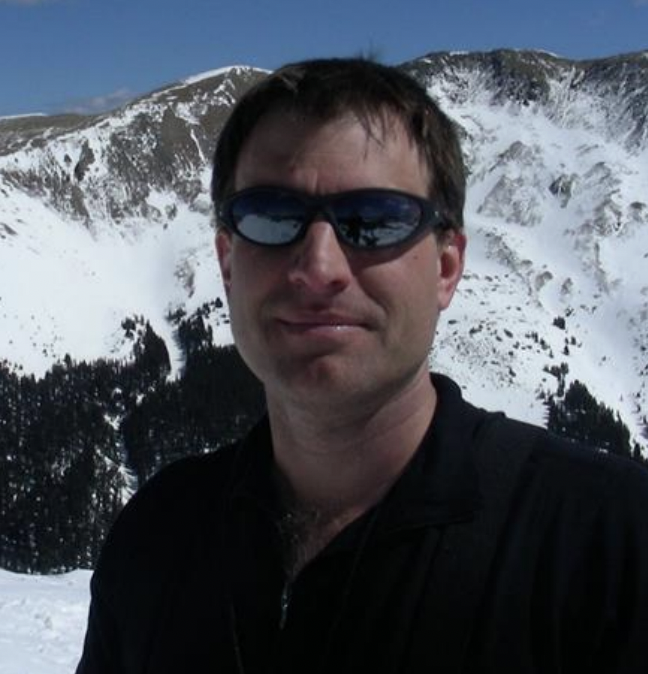
November 8, 2024
The U.S. Public-Private Partnership in Fusion Energy and Fusion Energy-Related Research in the UNM Plasma and Fusion Science Lab
Mark Gilmore, Department of Electrical and Computer Engineering, UNM
3:00 pm, UNM Centennial Engineering Center, Room 1026
Online Guests: Contact Prof. Osiński <osinski@chtm.unm.edu> for a Zoom link
Abstract: Controlling human-made climate change in a post-industrial society will demand the utilization of a range of carbon-free energy sources, as well as improvements in storage and distribution, efficiency, and conservation. One possible energy solution, suitable for large cities and heavy industry, is Nuclear Fusion. In the last decade, private companies – mainly startup companies – have invested billions of $US in fusion energy research. In order to further this effort, the U.S. Department of Energy (DoE) has initiated a public-private partnership in fusion research. In this talk, the basics of fusion energy and the current status of research will be reviewed. The landscape of private companies engaged in this work will then be briefly described. Finally, research conducted in the last decade related to Fusion Energy in the UNM Plasma and Fusion Science Lab will be discussed.
Bio: Dr. Mark Gilmore is a Professor in the ECE and Physics & Astronomy Departments at UNM. He received the B.S. from Boston University, and the M.S. from Northeastern University, both in EE, and the Ph.D. in Applied Physics from UCLA. He joined the UNM ECE Department in 2003 as an Assistant Professor. Prof. Gilmore has over 35 years of research experience in plasma physics, and has worked in wide variety of areas within plasma science, including industrial plasmas for printing and materials processing, plasma diagnostics, magnetic fusion for energy, turbulence and transport, ionospheric plasma physics, plasma sources, high-power microwave devices, laboratory astrophysics, and High-Energy-Density Physics. He currently serves as Interim Chair of the UNM Electrical and Computer Engineering Dept.
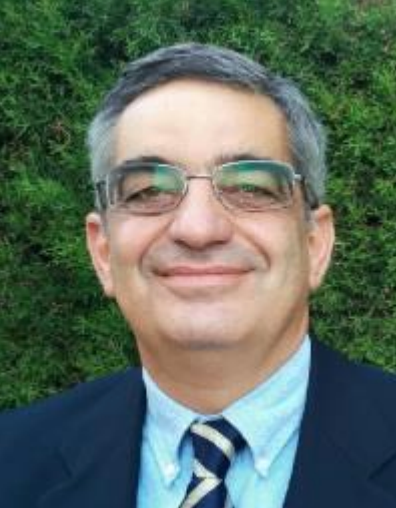
November 1, 2024
Medical Imaging and AI
Constantinos S. Pattichis, Department of Computer Science & Biomedical Engineering Research Centre, University of Cyprus, & CYENS Centre of Excellence
3:00 pm, UNM Centennial Engineering Center, Room 1026
Online Guests: Contact Prof. Osiński <osinski@chtm.unm.edu> for a Zoom link
Abstract: Advances in Artificial Intelligence (AI) are reshaping the landscape of medical imaging, offering unprecedented opportunities for enhanced diagnosis, treatment planning, and patient outcomes. This presentation will briefly highlight how medical imaging AI-driven technologies will help towards offering precision medicine services. Key areas of focus will include deep learning models for image segmentation, classification, and anomaly detection, as well as their integration into clinical workflows to assist radiologists in identifying complex patterns that might be imperceptible to the human eye. Furthermore, we will explore case studies that underscore the effectiveness of explainable AI (XAI) in medical imaging, demonstrating how it provides clear, interpretable insights that empower clinicians with deeper understanding and confidence in AI-driven diagnoses.
Bio: Prof. Constantinos S. Pattichis has 30 years of experience in eHealth and connected health, medical imaging, biosignal analysis, intelligent systems and explainable AI, and more recently in mHealth interventions based on X Reality applications. He has been involved in numerous projects in these areas funded by EU and other bodies, with a total funding managed in excess of 20 million euros. He has published 150 journal articles, 265 conference papers, 3 monographs, 30 chapters in books and co-edited 4 volumes, 22 journal special issues and 20 conference proceedings. He was the Technical Leader of the EU project funded under the Emergency Support Instrument Action for Cyprus to implement the EU Digital COVID Certificate Platform for the issuance of the corresponding certificates for vaccination, recovery, and laboratory testing, which has been used by more than 1 million users (eudcc.gov.cy). He is a member of the European Academy of Sciences and Arts, Fellow of IEEE, IET, International Academy of Medical and Biomedical Engineering (IAMBE) and European Alliance for Medical & Biological Engineering & Science (EAMBES).
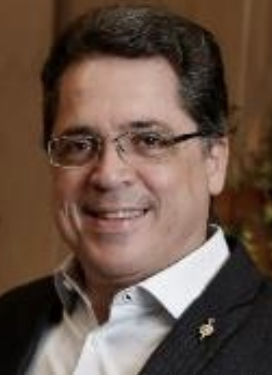
October 18, 2024
An Overview of Inverse Problem Formulations and Solutions
Antônio J. Silva Neto, Rio de Janeiro State University, Brazil
3:00 pm, UNM Centennial Engineering Center, Room 1026
Online Guests: Contact Prof. Osiński <osinski@chtm.unm.edu> for a Zoom link
Abstract: A situation often encountered in various relevant applications of engineering and science is that, in general, parameters or functions used in modelling of systems and processes may be unknown. However, partial experimental data on observable indirect quantities may be available. Using the inverse problem approach, a link between models and experiments can be constructed, allowing the determination of the unknowns of interest. The parameters and functions involved in the models present random variations, and the experimental data are always contaminated by random noise. Such characteristics should be taken into account in the formulation and solution of inverse problems. In this talk, several inverse problems in engineering and environmental modelling will be presented, considering different formulation approaches and solution techniques.
Bio: Antônio J. Silva Neto is a Full Professor in the Department of Mechanical Engineering and Energy, Polytechnic Institute, Rio de Janeiro State University. He has a diverse international education background in Mechanical/Nuclear Engineering and Applied Mathematics: Mechanical/Nuclear Engineer (1983) and M.Sc. in Nuclear Engineering (1989), both from Federal University of Rio de Janeiro, Brazil, and Ph.D. in Mechanical Engineering (North Carolina State University, 1993) with a minor in Computational Mathematics. He first worked for the Brazilian National Commission on Nuclear Energy, CNEN (1984-1986) and Promon Engineering, the largest Brazilian private company in Consulting Engineering (1986- 1997). Since 1997, he has been with Rio de Janeiro State University, becoming a Full Professor in 2013. In 2021 he started a formal institutional cooperation with research groups of SENAI CIMATEC (Manufacturing and Technology Integrated Campus) in Brazil. He is a former president of the Brazilian Society of Computational and Applied Mathematics (2014-2017), and of the Brazilian Association of Mechanical Sciences and Engineering (2009-2013). Prof. Silva Neto’s main current research areas are: inverse problems; heat and mass Transfer; radiative transfer; computational intelligence; and environmental modelling. He is serving as Associate Editor for several journals in engineering and applied mathematics: Computational & Applied Mathematics (Springer, since 2005); Journal of Heat and Mass Transfer (ASME, since 2019); Journal of Computational Mathematics and Data Science (Elsevier, since 2021); and International Journal of Data Science and Analytics (Springer, since 2023).
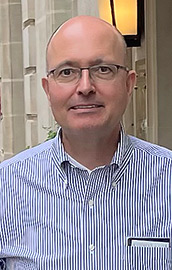
October 4, 2024
High Power RF Through the Lens of the SUMMA Foundation
Edl Schamiloglu, Department of Electrical and Computer Engineering, UNM
3:00 pm, UNM Centennial Engineering Center, Room 1026
Online Guests: Contact Prof. Osiński <osinski@chtm.unm.edu> for a Zoom link
Abstract: The SUMMA Foundation was founded in 1973 by the late Dr. Carl E. Baum and registered as a philanthropic organization to promote scientific and educational activities in the field of highpower electromagnetics (HPEM), also known as HPRF. The field of HPEM emerged from research on high-altitude electromagnetic pulse (EMP) and evolved to study sources of ultrawideband (UWB) radiation (now referred to as mesoband radiation) and narrowband highpower microwave (HPM) radiation (now referred to as hypoband radiation). Today this field includes sources of intentional electromagnetic interference (IEMI), which is of concern to civilian infrastructure as well as to nation’s militaries. This presentation will describe the activities of the SUMMA Foundation in advocating for HPRF research internationally. In addition, it will discuss the synergy between the work of the SUMMA Foundation, the development of HPRF, and the Applied EM Program in ECE@UNM.
Bio: Dr. Edl Schamiloglu is a Distinguished Professor in the Department of Electrical and Computer Engineering at UNM. He also leads the Directed Energy Center at UNM. He received the B.S. and M.S. degrees from Columbia University in 1979 and 1981, respectively, and the Ph.D. degree in Engineering from Cornell University in 1988. He joined UNM as an Assistant Professor in 1988. He is a Fellow of the IEEE, a Fellow of the American Physical Society, and in 2019 he received the inaugural IEEE NPSS Magne “Kris” Kristiansen Award for Contributions to Experimental Nuclear and Plasma Science. He has published over 200 refereed journal articles. He has supervised 40 Ph.D. dissertations and 40 M.S. theses.
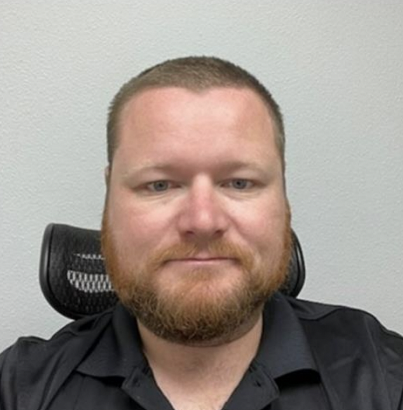
September 27, 2024
Food Manufacturing: The History, Development, and Challenges of Control Systems
Cormac O’Kelly, Southwest Cheese, Clovis, NM
3:00 pm, UNM Centennial Engineering Center, Room 1026
Online Guests: Contact Prof. Osiński <osinski@chtm.unm.edu> for a Zoom link
Abstract: This talk is focused on the manufacturing industry, in particular, food manufacturing. We will provide a brief overview of our company Glanbia, and our local subsidiary Southwest Cheese. We will cover the cheese and whey manufacturing process with details surrounding the manufacturing industry and the challenges we currently face. We will outline the life cycle of the process, discuss the technological advancement of food manufacturing in the last decade, and the impact of controls in the industry. Discussion will focus on industry best practices for automation and controls and the current setup of our facility. We will talk about the risk of cyber security and the work that is undertaken to secure our facilities from ransomware and other malicious software. We will then discuss how a large manufacturer addresses these areas and how they stay on top of new developments in a fast-moving technological world. Finally, we will briefly discuss Industry 4.0 and smart manufacturing technology that is emerging and how AI can impact the industry going forward.
Bio: Cormac O’Kelly received a B.Sc. degree in Mechanical Engineering, and a B.A. degree from University College Dublin, Ireland in 2011. He obtained a graduate engineering position for Glanbia after graduation and moved to the Southwest Cheese Facility in New Mexico in 2012. He has held various engineering positions, including Graduate Engineer, Project Engineer, Engineering Manager, Maintenance and Engineering Manager, and Environmental, Health, and Safety Engineer. He has led and implemented projects that value over $120M, has managed a team of over 60 people, and managed annual budgets in excess of $14M. In his current role, he is responsible for all engineering projects and processes, environmental, health and safety submissions to the appropriate state and national bodies, including EPA, New Mexico Environment Department, and OSHA.
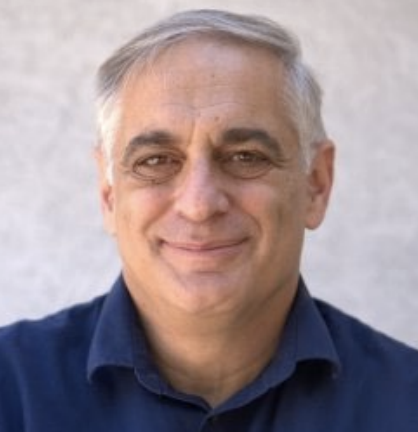
September 20, 2024
Large-Scale Video Analysis: A Frontier of Artificial Intelligence
Marios Pattichis, Department of Electrical and Computer Engineering, UNM
3:00 pm, UNM Centennial Engineering Center, Room 1026
Online Guests: Contact Prof. Osiński <osinski@chtm.unm.edu> for a Zoom link
Abstract: This talk is focused on the recent efforts of speaker’s group and hisr collaborators to process real-life video datasets used for clinical decision support and classroom video analysis. New models avoid the need and inherent biases of transfer learning, support interpretability, provide fast inference, and match or outperform current methods.
Bio: Prof. Marios Pattichis received a B.Sc. degree (High Hons. and Special Hons.) in computer sciences, a B.A. degree (High Hons.) in mathematics, an M.S. degree in electrical engineering, and a Ph.D. degree in computer engineering from The University of Texas at Austin, TX, in 1991, 1991, 1993, and 1998, respectively. He is currently a Professor and Director of online programs in the ECE Department at UNM. He is also the Director of the Image and Video Processing and Communications Lab (ivPCL). He was elected as a Senior Member of the National Academy of Inventors and a Fellow of the European Alliance of Medical and Biological Engineering and Science (EAMBES) for his contributions to biomedical image analysis.
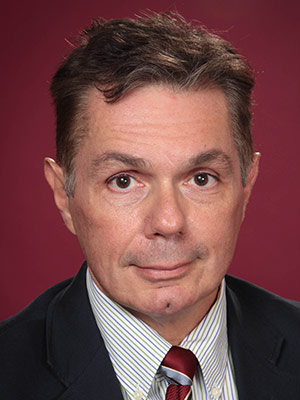
September 13, 2024
AI/ML-Enabled Intelligent Next-Generation Autonomous Network System: Performance Enhancement and Management
Michael Devetsikiotis, Department of Electrical and Computer Engineering, UNM
3:00 pm, Woodward Hall, Room 147, UNM
Online Guests: Contact Prof. Osiński <osinski@chtm.unm.edu> for a Zoom link
Abstract: This seminar presents ML/AI enabled intelligent next generation autonomous network system for network performance enhancement and management, particularly suited for networks like 5G, Beyond 5G (B5G), 6G and software-defined network (SDN). The seminar is segmented into four critical parts. Firstly, it focuses on quality of service (QoS) monitoring and provisioning using intelligent QoS agent design in 6G network. Secondly, it elaborates on long short-term memory (LSTM) and serial-parallel (SP) LSTM comparative analysis towards network traffic prediction in 6G networks. Thirdly, seminar delves into role delegation function as a service to improve reliability and latency in SDN. Lastly, touch down investigating further into AI-MLAgents for SDN Network Performance Enhancement for dynamic optimal routing. Overall, the research material holds substantial promise for transforming network management through automation, adaptability, and advanced intelligence. This seminar is based on the dissertation of Dr. Harsh Kumar, who graduated from UNM in May 2024, under the supervision of Prof. Devetsikiotis.
Bio: Prof. Michael Devetsikiotis received his Ph.D. in Electrical Engineering from North Carolina State University. He specializes in the design and performance evaluation of telecommunication networks, modeling and simulation of cyber-physical systems, and studying smart grid communications, smart cities, and the Internet of Things. He served for seven years as Department Chair of Electrical and Computer Engineering at UNM. He is currently President of the ECE Department Heads Association. He has published over 200 refereed publications on the design, simulation, and performance evaluation of telecommunication networks, socio-technical and cyber-physical systems, smart grid, smart cities, and the Internet of Things. He has received over 10,000 citations and was funded by NSF, NSERC, Cisco, Alcatel, and IBM. He became an IEEE Fellow in 2012 and has served as Chair of ComSoc’s Communication Systems Integration and Modeling Committee, member of Education Services Board, GITC Chair, and as an IEEE Distinguished Lecturer.
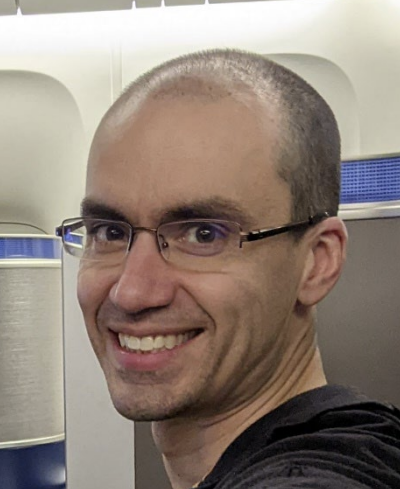
September 6, 2024
The Soft, Firm, and Hardware Behind a Quantum Computer
Jay Van Der Wall, Sandia National Laboratories
3:00 pm, Mitchell Hall, Room 102, UNM
Online Guests: Contact Prof. Osiński <osinski@chtm.unm.edu> for a Zoom link
Abstract: The increasing size and capabilities of quantum computers and algorithms regularly makes headlines. But behind the quantum aspects of these machines lie numerous classical enabling technologies. We will look at a sampling of these technologies behind QSCOUT, an open trapped-ion testbed at Sandia National Laboratories. These technologies include custom RFSoC boards, an MQTT-based messaging system, and software and techniques for shuttling ions around the trap.
Bio: Jay Van Der Wall is a Software Developer in the Photonic Microsystems Technologies department at Sandia National Labs since 2013. He received his MSE degree in Computer Science from Johns Hopkins University in 2009. At Sandia he has been responsible for various software-related aspects of trapped ion experiments from trap design to GUI development.
August 30, 2024
Secure Onboarding for IOT Devices: Challenges and Emerging Solutions
Giridhar Mandyam, Mediatek USA
3:00 pm, Department of Electrical and Computer Engineering, UNM
Online Guests: Contact Prof. Osiński <osinski@chtm.unm.edu> for a Zoom link
Abstract: IoT (Internet of Things) devices are becoming ubiquitous, and are enabling automation in businesses, homes, and city infrastructure. Many such devices are internet-enabled, and increasingly are connected via cellular networks. Onboarding of such devices remains an issue. Onboarding is the process of connecting a new or reconditioned device to a network. Onboarding is a critical aspect of enabling remote device management. IoT devices unfortunately are difficult to onboard, oftentimes due to a lack of intuitive user interface and limited processing capabilities. Therefore many device vendors have tried to streamline the process to allow for device onboarding upon first power-up with little to no user intervention (“zero-touch onboarding”). However, if the onboarding process is not secure then the devices themselves can be vulnerable to compromise. Depending on the application, this in turn can lead to more than just financial loss given the increasing use of IoT devices in critical operations such as smart city infrastructure or medicine. This talk will discuss the technical challenges in enabling secure IoT device onboarding, and will also provide an overview of recent approaches to solve these problems.
Bio: Dr. Girtidhar D. (Giri) Mandyam is the Chief Security Architect for Mediatek’s computing and automotive products. He received a BSEE in 1989 from Southern Methodist University (Magna Cum Laude), MSEE in 1993 from the University of Southern California, and PhD EE in 1996 from the University of New Mexico. He has also worked at Qualcomm Inc., Rockwell International, Texas Instruments, and Nokia. He was the Chair of the IoT Working Group in the Fast Identity Online (FIDO) Alliance, which developed the first industry standard for secure onboarding of IoT devices. Dr. Mandyam is inventor or co-inventor of more than 70 issued US patents, and was recognized in 2017 by Qualcomm with the IP Achievement Award. He has also published over 80 conference and journal papers, and 5 book chapters. He is a co-author of the text Third-Generation CDMA Systems for Enhanced Data Services (Academic Press, 2002). He is a Senior Member of the IEEE and has been a member of the editorial board of the IEEE Transactions on Wireless Communications.

August 23, 2024
Future of Semiconductors: A Co-Design Approach for Materials, Devices, and Systems
Payman Zarkesh-Ha, Department of Electrical and Computer Engineering, UNM
3:00 pm, Department of Electrical and Computer Engineering, UNM
Online Guests: Contact Prof. Osiński <osinski@chtm.unm.edu> for a Zoom link
Abstract: Semiconductor industry has improved beyond imagination over the past 50 years. Today, AMD’s MI300X GPU has the largest transistor count totaling 153 billion transistors built on TSMC's 5 nm process. This improvement of eight-orders in magnitude of added capability (transistor count) is unheard of in any other industry worldwide. Although the semiconductor industry has made significant efforts over the years to get over the hurdles while scaling transistors, we are now reaching the physical limits of silicon, where a transistor contains only a few silicon atoms. The question is now “What is the future of semiconductors over the next 50 years?” The objective of this talk is to address this question by building a research team to develop a co-design scheme that will pave the way to the creation of a novel synthetic material using semiconductor nanowires in a reconfigurable neuromorphic integrated circuit that can potentially be a revolutionary breakthrough in semiconductor industry by breaking the existing physical limits in integrated circuits.
Bio: Dr. Payman Zarkesh-Ha is a Professor in the ECE Department and Director of the Center for High Technology Materials (CHTM) at UNM. He received his MS degree in Electrical and Computer Engineering from Sharif University, Tehran, Iran in 1994, and his Ph.D. degree in Electrical and Computer Engineering from Georgia Institute of Technology, Atlanta, GA, in 2001. Prior to joining UNM in 2006, he was a Senior Research Engineer with LSI Logic Corporation, Milpitas, CA, where he worked on interconnect architecture design for the next ASIC generations. His research interests include statistical modeling of nanoelectronic devices and systems, design for manufacturability, as well as low-power and highperformance VLSI design. He has published over 125 refereed papers and holds 22 issued patents in this field.
Spring 2024 ECE 590 Graduate Seminars
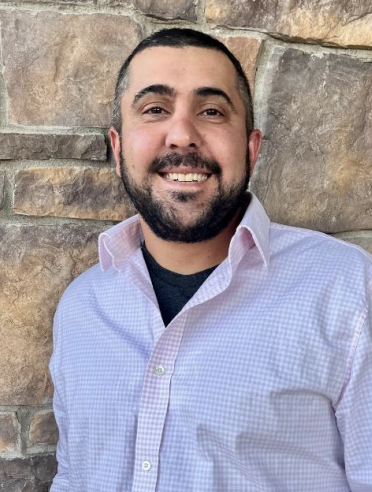
May 3, 2024
Intel Technology Roadmap and Challenges
Jamshid Sorooshian, Intel Corporation, Rio Rancho, NM
3:00 pm, ECE Building, Room 118
Online Guests: Contact Prof. Osiński <osinski@chtm.unm.edu> for a Zoom link
Abstract: The technology roadmap for the semiconductor industry has evolved from a standard Moore’s law outlook, to a more complex fab process line that has shifted from monolithic device fabrication. Today’s roadmaps show evolving integrated packaging schemes that begin to bridge the traditional fab process with that of the advanced packaging.
As such, the semiconductor industry is posed with new challenges that test the boundaries of material compatibility, thermal budgets, and 3- dimensional structural concerns (i.e., device bow, warpage, delamination, etc.)
This talk will touch on the considerations to reach our current state, and the path forward.
Bio: Dr. Jamshid Sorooshian is the New Mexico Site Manager for Program and Technology at Intel, focused on specialty processes specific to the New Mexico site and the broader disaggregate manufacturing organization. He received his PhD from the University of Arizona from the Department of Chemical Engineering with a focus on semiconductor planarization processes. He has spent his professional career at Intel Corporation spanning roles in Process Engineering, Yield and Integration, Technology and Development, and Technology Transfer management. He currently manages all aspects of cost, technology risk assessment, and technology transfer for the Rio Rancho site.
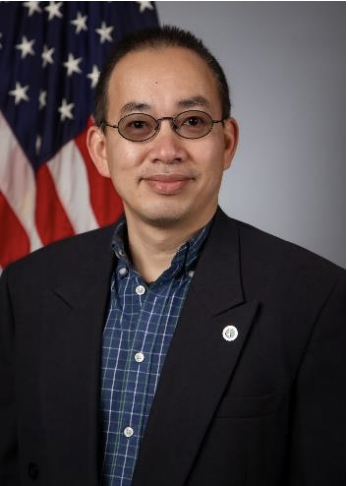
April 26, 2024
Enhanced Multi-Way Time Transfer for HighPrecision Time Synchronization among UASs
Khanh Pham, Air Force Research Laboratory
3:00 pm, ECE Building, Room 118
Online Guests: Contact Prof. Osiński <osinski@chtm.unm.edu> for a Zoom link
Abstract: This talk begins with a framework of enhanced two-way time transfer (TWTT) that is capable of achieving high-precision (e.g., 100 picoseconds) time synchronization of multiple distributed RF sources located on UASs in a GPS-denied environment. The proposed Enhanced Multi-Way Time Transfer relaxes two conditions of traditional TWTT: (i) Time at which the time-based signals are transmitted are the same for both Transmit and Receive sides and (ii) Propagation delays of time signals must be the same in both directions. Event-driven numerical simulations are also implemented and analyzed.
Bio: Dr. Khanh D. Pham is a supervisory principal aerospace engineer at the Air Force Research Laboratory / Space Vehicles Directorate and an adjunct research professor in the ECE Department at UNM. He is a Fellow of the Institute of Electrical and Electronics Engineers, National Academy of Inventors, Air Force Research Laboratory, American Astronautical Society, Society of Photo-Optical and Instrumentation Engineers, Institution of Engineering and Technology, Royal Aeronautical Society, Royal Astronomical Society, International Association for the Advancement of Space Safety, and Asia-Pacific Artificial Intelligence Association. He holds 35 US patents.
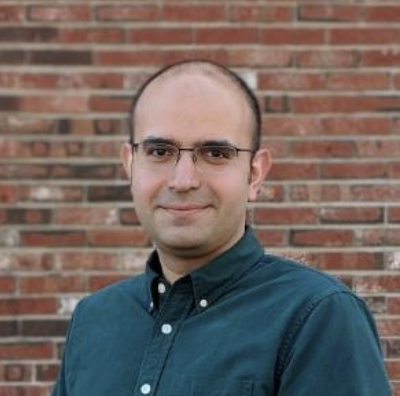
April 19, 2024
Combating Noise on Quantum Computers
Milad Marvian, Department of Electrical and Computer Engineering, UNM
3:00 pm, ECE Building, Room 118
Online Guests: Contact Prof. Osiński <osinski@chtm.unm.edu> for a Zoom link
Abstract: Quantum computers have the potential to solve certain computational tasks significantly faster than classical computers. Although the theory of quantum fault-tolerance ensures that quantum computers can operate reliably in the presence of decoherence and noise, achieving such noise levels in experiments remains extremely challenging. In this talk, the basics of a few strategies to reduce and correct errors in quantum computers will be discussed.
Bio: Dr. Milad Marvian is an Assistant Professor in the ECE Department and also a member of the Center for Quantum Information and Control (CQuIC). Before joining UNM in 2020, he was a postdoctoral associate at Massachusetts Institute of Technology. He completed his Ph.D. in Electrical & Computer Engineering in 2018 at the University of Southern California.
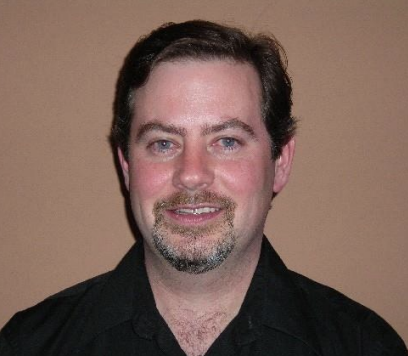
April 12, 2024
Wet Chemical Processes in Silicon Semiconductor Manufacturing
David J. Maloney, Technic Inc. and Linx Consulting, LLC, Pleasanton, CA
3:00 pm, ECE Building, Room 118
Online Guests: Contact Prof. Osiński <osinski@chtm.unm.edu> for a Zoom link
Abstract: The ever-increasing complexity demanded by advanced semiconductor manufacturing naturally drives concurrent complexity in all of the processes and materials that enable leading-edge microprocessors, memory, and ASIC products, and this extends to the wet chemical treatments that are heavily employed in advanced fabs. Starting with the advent of the RCA Cleans suite of processes, this talk reviews the history of liquid-phase chemical processing in semiconductor fabrication, from Si surface preparation through wafer-level packaging (“WLP”), and covers wet photoresist removal, selective wet etching, post-plasma etch cleaning, and post-CMP cleaning. The breadth and variety of chemistries and processes required to sustain the stringent demands of leading-edge Si processing will be highlighted.
Bio: Dr. David J. Maloney is an independent consultant to the chemical industry with a focus on the electronics materials and chemical manufacturing and blending sectors. His career has included a wide range of roles at DuPont, Intermolecular Inc., and several startup companies. He currently supports several organizations, including Technic Inc., a supplier of high-purity formulated solutions to the semiconductor industry; and Linx Consulting, the leading electronics materials consultants within the semiconductor industry. Dr. Maloney holds degrees in chemistry from McGill University (B.Sc.), Texas A&M University (Ph.D.) and the University of California, Berkeley (MBA). He has authored over 40 peer-reviewed publications and patents.
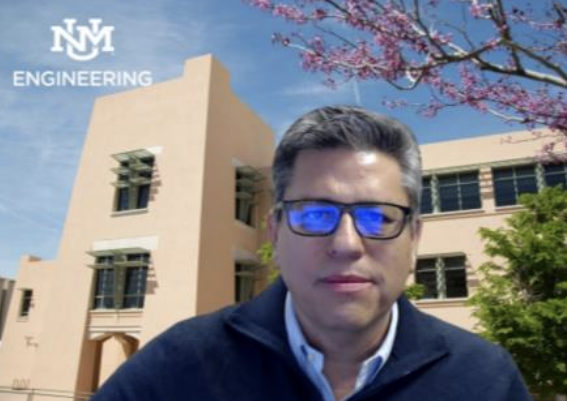
April 5, 2024
Need Help Moving a Table at Home or Repairing a Satellite in Space? Robots Can Help You!
Rafael Fierro, Department of Electrical and Computer Engineering, UNM
3:00 pm, ECE Building, Room 118
Online Guests: Contact Prof. Osiński <osinski@chtm.unm.edu> for a Zoom link
Abstract: There is a technique called Decentralized Adaptive Control. In this seminar, I will demonstrate how it can assist you in rearranging your furniture, opening doors, moving boxes, and performing other complex tasks. Additionally, I will showcase several recent and ongoing projects at the AgMan and MARHES Labs, including catching a lost drone, monitoring CO2 levels in volcanoes in collaboration with my colleagues from Computer Science, stabilizing and repairing a satellite in orbit, and piloting an omnicopter.
Bio: Rafael Fierro is a Professor in ECE at UNM since 2007. He earned his MSc. in control engineering from the University of Bradford UK in 1990 and completed his Ph.D. in electrical engineering at the University of Texas at Arlington in 1997. Before UNM, he conducted postdoctoral research at the GRASP Laboratory at the University of Pennsylvania and later held a faculty position at Oklahoma State University. His research focuses on robotic networks, multi-agent systems, UAVs, and collaborative robot manipulation. Supported by the National Science Foundation (NSF), AFRL, DOE, Sandia National Laboratories, Northrop Grumman, NATO, and the Breakthrough Foundation, he directs the AFRLUNM Agile Manufacturing Center (AgMan) and the Multi-Agent, Robotics, and Heterogeneous Systems (MARHES) Laboratory. He received a Fulbright Scholarship, an NSF CAREER Award, and the 2008 ISA Transactions Best Paper Award.
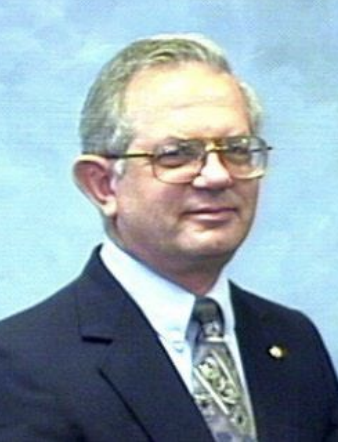
March 29, 2024
An Introduction to the Nuclear Electromagnetic Pulse
William Prather, Air Force Research Laboratory, Kirtland AFB, NM
3:00 pm, ECE Building, Room 118
Online Guests: Contact Prof. Osiński <osinski@chtm.unm.edu> for a Zoom link
Abstract: High-altitude nuclear electromagnetic pulse (HEMP) has been recognized as a threat to electrical and electronic equipment since the early 1960s. It is becoming increasingly important today because of the growing global nuclear threat and the increased dependence of all of our forces on computers and electronic systems to carry out their mission. The purpose of this talk is to describe the phenomenon of HEMP, the effect it has on aircraft, and the methods used for hardening and testing modern aircraft.
Bio: Dr. William Prather received the BSEE and MSEE degrees from the University of New Mexico in 1970 and 1975 respectively. He worked at the Air Force Research Laboratory at Kirtland AFB from 1970 until his retirement in 2018. Since then, he has continued to support nuclear effects programs as a member of the Emeritus Corps. His special interests include EMP simulation, interaction and coupling, aircraft EMP hardening design, and the development of CW test methods for measuring system shielding. He has been very active in writing FAA and Military Standards and Handbooks for the design of protection of aircraft and Navy ships against EM Hazards. Mr. Prather is the recipient of the Peter Haas Award and the Carl Baum Medal. He is a Fellow of the EMP Society, a Senior Member of IEEE, a member of URSI Commission E and a member of Eta Kappa Nu.
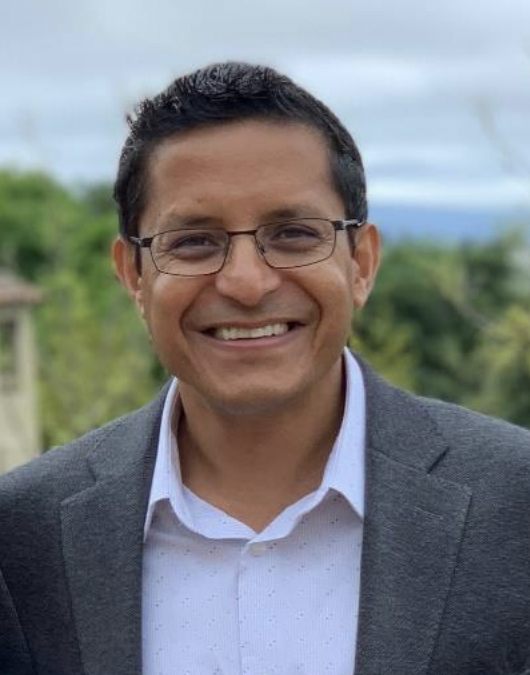
March 22, 2024
Novel Processes for Advanced Nanoelectronic Devices
Shashank Sharma, Applied Materials, Santa Clara, CA
3:00 pm, ECE Building, Room 118
Online Guests: Contact Prof. Osiński <osinski@chtm.unm.edu> for a Zoom link
Abstract: Relentless scaling over the past several decades of semiconductor devices has been driven by performance, power, density, and cost requirements. Semiconductor industry has been successfully meeting these requirements with continued innovations in design, integration, and materials engineering. Logic transistor technology transitioned from planar geometry to 3D geometries such as FinFETs and horizontal gate all around, while introducing numerous new materials and processes across front end of the line all the way into back end of the line. Memory devices on the other hand have also seen integration in third dimension both in NAND and DRAM. This talk reviews some of the key challenges introduced by the new device architectures and various materials processing innovations that enable continued scaling.
Bio: Dr. Shashank Sharma holds the CTO position in Front End Products business unit in Semiconductor Products Group at Applied Materials. He has more than 20 years experience in the semiconductor industry, with the past >12 years at Applied Materials, developing advanced semiconductor process technologies in the areas of thermal and activated species treatment. He has authored/co-authored more than 60 publications and is credited with more than 24 granted patents. Dr. Sharma received his M.S. and Ph.D. degrees in Chemical Engineering from the University of Louisville, Kentucky in 2000 and 2003, respectively.
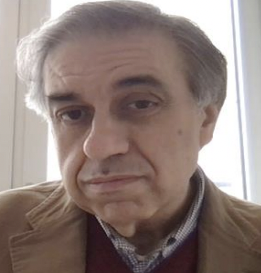
March 8, 2024
Fostering Link and Service Continuity in Connection-Critical Scenarios
Claudio Sacchi, University of Trento, DISI, Trento, Italy
3:00 pm, ECE Building, Room 118
Online Guests: Contact Prof. Osiński <osinski@chtm.unm.edu> for a Zoom link
Abstract: One of the claimed challenges of 5G and beyond standards is to provide service continuity in network scenarios where the connection links are discontinuous. In this seminar, some very recent results will be shown concerning this topic. The first series of results will deal with the use of Unmanned Aerial Vehicles (UAVs) to develop a transparent multi-frequency relay network performing signal amplification and frequency conversion between a satellite-based 5G network and User Equipment (UE). The claimed objective of the considered approach is to guarantee the link continuity also in the unpleasant case of disruption of the wireless terrestrial coverage. The second series is related to an experimental testbed leveraging Multi-Access Edge Computing (MEC) to maintain service availability in a satellite-aided 5G network configuration, where the terrestrial coverage is reduced or even missed. The global outcomes of the research work shown in the seminar will provide some guidelines to the design and implementation of robust radio network configurations capable of tackling emergency situations and solving urgent digital-divide issues.
Bio: Claudio Sacchi received the “Laurea” degree in Electronic Engineering and the Ph.D. in Space Science and Engineering from the University of Genoa, Italy, in 1992 and 2003, respectively. From 1996 to 2002, he was a Research Cooperator with the Department of Biophysical and Electronic Engineering (DIBE), University of Genoa, and with the National Italian Consortium in Telecommunications (CNIT), managing project activities in the field of multimedia surveillance systems and satellite communications. In August 2002, he joined the Department of Information Engineering and Computer Science (DISI), University of Trento, Italy, as an Assistant Professor. He was promoted to Associate Professor in December 2020. He has authored and coauthored more than 140 papers published in international journals and conferences. He is a member of the IEEE ComSoc, IEEE BTS, IEEE VT, and IEEE AESS. Since 2019, he has been coordinating and chairing the IEEE AESS technical panel: “Glue Technologies for Space Systems” that was awarded by AESS as “Outstanding Panel of the Year” in 2020 and 2021. Since January 1st, 2023, he has had double affiliation with UNM as Research Professor. His main research interests are related to emerging satellite and aerospace communications and broadband mobile communications in 5G and 6G systems.
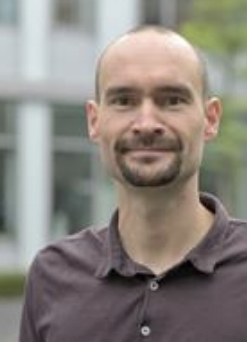
March 1, 2024
Nanopositioning and Nanomeasuring Technology for Traceable 3D Nanofabrication and Surface Inspection
Dr. Ingo Ortlepp, Technical University Ilmenau, Germany
3:00 pm, ECE Building, Room 118
Online Guests: Contact Prof. Osiński <osinski@chtm.unm.edu> for a Zoom link
Abstract: Nanopositioning and nanomeasuring machines (NPMMs) have proven their potential for nanometer accurate measurements in volumes up to 200 mm x 200 mm x 25 mm with 5 axis operation in several fields. As these machines offer picometer resolution and nanometer uncertainty, the goal is to transfer their precision to fabrication and patterning. So far, our NPMMs have been equipped with laserbased and tip-based tools (1PP, 2PP, NIL, AFM, SPL) and combinations thereof. The goal is basic research on these technologies, to estimate the potential for later use in an industrial scale. The talk will describe the basics and parameters of NPMMs and the nanofabrication tools that we are currently working on. Focus is on the parameters in measurement mode and the accomplished fabrication results.
Bio: Dr. Ingo Ortlepp is a postdoc at the Institute for Process Measurement and Sensor Technology at TU Ilmenau and managing director of the research training Group NanoFab there. His research fields are dimensional metrology, in particular interferometry (concepts, optics, signal processing, laser sources), nanopositioning and nanomeasuring machines (concepts, mechanics, measuring strategies) and tools for measuring and patterning (optical, tip-based). He received his diploma in mechanical engineering from and in 2007, and his PhD in 2020 in the field of standing wave interferometry, both from TU Ilmenau.
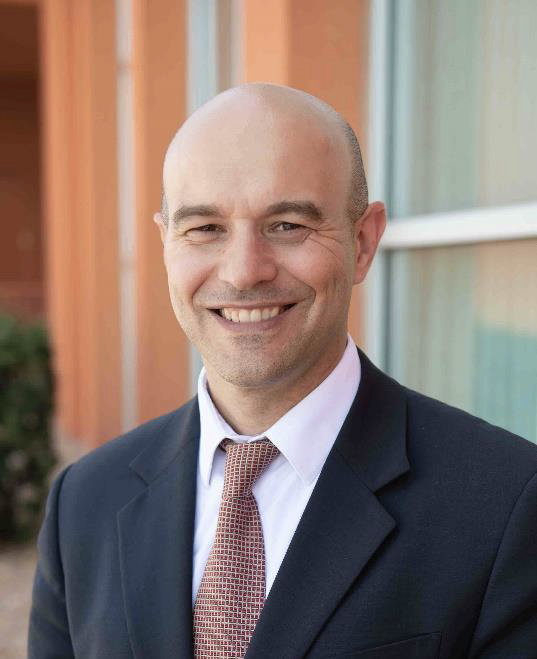
February 16, 2024
Human-Infrastructure Interfaces, Fulbright Experiences Overseas, and Advancing Journal Publications
Fernando Moreu, PE, PhD, The University of New Mexico
3:00 pm, ECE Building, Room 118
Online Guests: Contact Prof. Osiński <osinski@chtm.unm.edu> for a Zoom link
Abstract: This presentation summarizes new research on Human-Infrastructure Interfaces (HII) advancing new bi-directional interfaces between human, machines, and infrastructure. The implementation of HII theory is achieved connecting new sensor technologies and Augmented Reality with infrastructure performance. Applications include structural dynamics and control, damage quantification, engineering learning, and humanmachine interfaces. New human-in-the-loop theories and experiments and applications facilitate trusted performance-based monitoring, robot control, and disaster recovery. Results include experiments and implications to Digital Twins and infrastructure management from cradle to grave using new technologies. Additionally, the speaker will share with the audience the work conduced during his Fulbright Fellowship at Taiwan last academic year, and advice for graduate (and undergraduate) students regarding research and scholar publications.
Bio: Fernando Moreu is an Associate Professor at the Department of Civil, Construction, and Environmental Engineering (CCEE) at the University of New Mexico (UNM). He holds courtesy appointments in the Departments of Electrical & Computer Engineering, Mechanical Engineering, and Computer Science at UNM. He is the founder and director of the Smart Management of Infrastructure Laboratory (SMILab). Prof. Moreu’s research interests include structural dynamics and control, structural health monitoring, wireless smart sensor networks, cyberphysical systems, computer vision, augmented reality, unmanned aerial systems, bridge engineering, and aerospace operations. Prof. Moreu received his MS and PhD degrees in structural engineering from the University of Illinois at UrbanaChampaign (2005 and 2015, respectively). He is the recipient of the Fulbright Hays Faculty Research Abroad and was a visiting professor at National Taiwan University in Taipei in Spring and Summer of 2023. He was the 2022 outstanding junior faculty researcher award at the UNM School of Engineering. Prof. Moreu’s projects are funded by the DOE, NSF, ONR, NAS, US DOT, TRB, New Mexico Space Grant Consortium, and the commercial sector. He is a member of ASCE, ASME, ASNT, ASEE and AREMA, and a registered Professional Engineer since 2010. Prof. Moreu is the current Secretary of the ASCE EMI Technical Committee in Structural Health Monitoring and Control (SHMC) (2023-2026) and also the current secretary of the Society for Experimental Mechanics Technical Division of Dynamics of Civil Structures (2023- 2025).
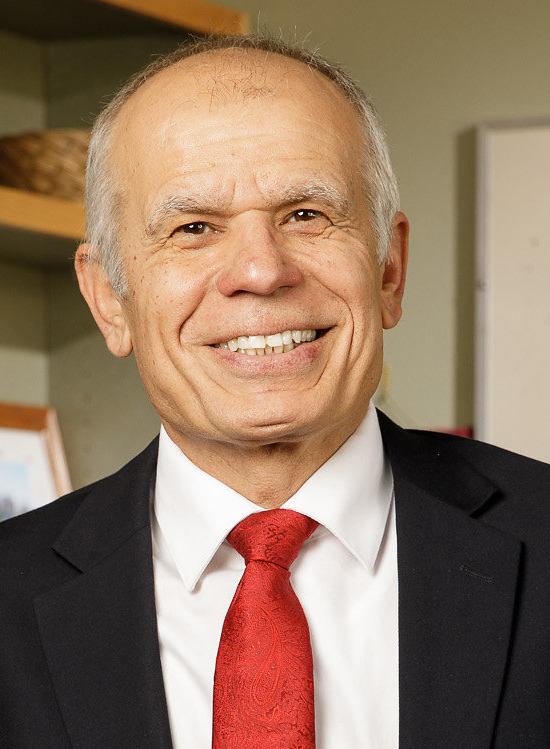
February 9, 2024
Engineering the Future of Space Research
Christos Christodoulou, The University of New Mexico
3:00 pm, ECE Building, Room 118
Online Guests: Contact Prof. Osiński <osinski@chtm.unm.edu> for a Zoom link
Abstract: COSMIAC is a Research Center in the School of Engineering at UNM that addresses contemporary engineering challenges crucial to the 21st century, spanning space technology, cybersecurity, PNT vulnerabilities, drone technology, space power beaming, RF and radiation effects on space electronics, and 6G communications.
Their diverse research portfolio is dedicated to engineering innovation that directly contributes to solving global issues. Positioned as New Mexico's aerospace research hub, COSMIAC plays a pivotal role in reinforcing UNM's leadership within the aerospace sector.
This seminar provides an overview of the ongoing research projects at COSMIAC and highlights opportunities for students to engage with and contribute to these projects.
Bio: Distinguished Professor Christos Christodoulou received his Ph.D. degree in Electrical Engineering from North Carolina State University in 1985. He joined the Electrical Engineering Department at UNM, where he served as the Chair of the Department from 1999 to 2005 and as the Dean of the School of Engineering (2017 to 2023). Currently, he is serving as the Director of COSMIAC. He is a Life Fellow member of IEEE and a member of Commission B of URSI. He is the recipient of the 2010 IEEE John Krauss Antenna Award, the 2022 IEEE Henning Distinguished Mentoring Award, and the 2023 IEEE Chen-To Tai Distinguished Educator Award. Since 2013, he has been serving as the series editor for Artech House Publishing company for the areas of Antennas, Propagation, and Electromagnetics. He has published over 600 papers in journals and conferences, has 20 book chapters, and has co-authored 9 books. He has also served as the main advisor for 40 PhD and 75 MS students.
